January 30, 2015
Air Date: January 30, 2015
FULL SHOW
SEGMENTS
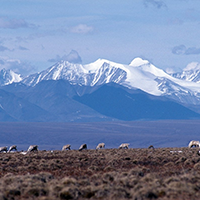
Protecting the Arctic
View the page for this story
President Obama wants millions of acres of the Arctic National Wildlife Refuge, including the oil-rich Coastal Plain, protected as wilderness. Meanwhile he’s opening other parts of the Arctic and Atlantic coast to energy development. Alex Taurel, Deputy Legislative Director of the League of Conservation Voters, discusses the importance of these developments with host Steve Curwood. (07:40)
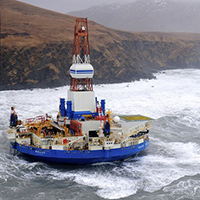
Alaskan Oil Economics
View the page for this story
Although the Interior Department is offering up new areas for potential fossil fuel leasing, the low price of oil means that new infrastructure may not make economic sense. Energy and investment analyst Joe Stanislaw and host Steve Curwood discuss the Administration’s thinking and oil and gas development prospects. (05:20)
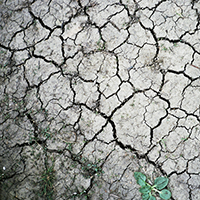
Beyond the Headlines
/ Peter DykstraView the page for this story
In this week’s trip beyond the headlines, Peter Dykstra tells host Steve Curwood all about water—crises, get-rich-quick schemes involving water, and water resources. (04:35)

The Perfect Protein
View the page for this story
We hear a great deal about the nutritional value of fish, but it seems to be getting increasingly difficult to eat seafood sustainably. This dilemma is the subject of a book called The Perfect Protein. The author, Andy Sharpless, is the CEO of the advocacy organization Oceana and joins host Steve Curwood to discuss how we can better manage our fisheries to feed our growing population. (11:20)
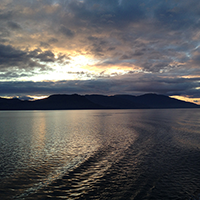
Alaskan River Riches: A River Town in Transition
/ Emmett FitzGeraldView the page for this story
Wrangell Alaska is a small, isolated town at the mouth of the mighty Stikine River and a one-time timber capital. But since the saw mills shut down in the ‘90s, the town has reinvented itself as a tourist destination and a commercial fishing hub. Both of those industries are dependent on the pristine Stikine River, and some locals are worried that mining development upstream could put the whole town at risk. (18:40)
Show Credits and Funders
Show Transcript
HOST: Steve Curwood
GUESTS: Alex Taurel, Joe Stanislaw, Andy Sharpless
REPORTERS: Emmett FitzGerald, Peter Dykstra
[THEME]
CURWOOD: From Public Radio International, this is Living on Earth.
[THEME]
CURWOOD: I’m Steve Curwood. As the President moves to protect millions more acres of the Arctic National Wildlife Refuge from oil development, a look at what’s at stake.
TAUREL: This is an absolutely vast wild place up in the northern part of Alaska. It's absolutely stunning and home to the most diverse populations of wildlife in the entire Arctic.
CURWOOD: But if the GOP-led Congress can block the President’s wilderness plans, could low oil prices make more Arctic exploration just too costly?
Also, how native Alaskans view development on their pristine wild rivers.
HAASATH: The river is really important. And I would hate to see anything happen to it. People talk about industry and that sort of thing. Well, industry comes and goes, but a river, by golly, once you destroy it it’s gone.
CURWOOD: We head north for that and more this week on Living on Earth. Stick around.
[NEWSBREAK MUSIC: Boards Of Canada “Zoetrope” from “In A Beautiful Place Out In The Country” (Warp Records 2000)]
ANNOUNCER: Support for Living on Earth comes from United Technologies – innovating to make the world a better, more sustainable place to live.
[THEME]
Protecting the Arctic

The Arctic National Wildlife Refuge (ANWR) covers nearly 20 million acres, containing five distinct ecological regions. Here, caribou graze on Alaska’s coastal plain with the Brooks Range in the distance. The calving grounds of the Porcupine Caribou Herd are in the coastal plain area, and some biologists fear that oil exportation and production in the region would put the herd at risk. The Porcupine Caribou Herd’s annual migration of 1500 miles between ANWR and the boreal forests of Alaska and northwest Canada is considered to be the longest of any land mammal on the planet. (Photo: USFWS; Flickr CC BY 2.0)
CURWOOD: From the Jennifer and Ted Stanley Studios in Boston and PRI, this is Living on Earth. I’m Steve Curwood. President Obama is expected to veto the Keystone pipeline legislation, but at the same time he’s offering some parts of the Atlantic coast and Arctic Ocean to off-shore oil and gas exploration. But he wants to curb drilling in highly sensitive areas of Alaska, by taking parts of the Chukchi and Beaufort Seas off the oil leasing market, and asking Congress to grant wilderness status to vast new areas of ANWR, the Arctic National Wildlife Refuge. This would give the highest degree of federal protection to most of ANWR, including 1.5 million acres of the oil and gas-rich Coastal Plain. But the Republican-led Congress is unlikely to go along. Alex Taurel is Deputy Legislative Director with the League of Conservation Voters. Welcome to Living on Earth.
TAUREL: Thanks for having me on, Steve.
CURWOOD: So what kinds of wildlife and pristine environment has President Obama proposed to protect with this wilderness designation? Paint me a picture, please.
TAUREL: Sure. This is an absolutely vast wild place up in the northern part of Alaska, the Arctic National Wildlife Refuge. It encompasses five distinct ecological regions. You've got the kind of beaches and salt marshes of the coastal marine areas, where you’ve got polar bears; the broad expanses of the coastal plain where you've got the Porcupine Caribou herd roaming; the windswept alpine tundra up in the Brooks mountain range. Beyond those you've got some some highlands where the Arctic plants kind of transition over to the boreal forest, and then in that forest you’ve got that spruce, birch, and aspen trees – home to more than 200 species of birds. It's an absolutely stunning landscape and home to the most diverse population the wildlife in the entire Arctic
CURWOOD: This has been a long-running controversy because there's a lot of oil in the Arctic National Wildlife Refuge. Why try to get a Republican Congress to approve this now?
TAUREL: So, the timing of this is that every 15 years all the wildlife refuges are supposed to do these management plans, so they're supposed to do these studies. So they took an inventory of all of the values, all the biology, the animals, the plants, and really came out with the recommendation that this place is worthy of our highest level of protection for public lands and that's a Wilderness designation. So they're going to be managing it to make sure that it maintains that wild character, and the President is recommending to Congress, which is the only body that can actually designate formal Wilderness, that they go ahead and pass a bill that does that. We're not terribly optimistic that this Republican Congress is going to take up the President's recommendation that they make it Wilderness, but that's where the science is, and we do hope that they act.

The Obama Administration recently proposed to designate about 12 million acres of the Arctic National Wildlife Refuge’s 19 million acres as wilderness. Seven million acres of ANWR are already wilderness. Some Alaskans oppose this, wishing to allow the drilling for fossil fuels here. Nearby the National Petroleum Reserve in Alaska already allows for oil leases, but few companies have taken advantage of opportunity. (Photo: USGS)
CURWOOD: Now, for the record part of the National Wildlife Refuge is already wilderness, right?
TAUREL: That's right. That's right. About seven million acres of the almost 19 million acres of the refuge is Wilderness.
CURWOOD: And this move would make it how much bigger?
TAUREL: It would make the vast majority of those 19 million acres into Wilderness.
CURWOOD: Now, the senator from Alaska, who's also the Chairwoman of the Senate Energy Committee, Lisa Markowski, was so - well outraged over this news. She said that this move amounts to economic warfare against her state. How can the representatives from Alaska and the administration come together on an agreement as to how to balance the economics here and the value of the environment?
TAUREL: Well, I think there's a balance being struck up in Alaska. I mean, Alaska is one of the biggest oil producers among the United States, and you know, just this week the President - to our regret - announced some new lease sales up in Arctic Ocean north for the Arctic refuge. They're holding annual drilling lease sales up in the National Petroleum Reserve right next to the Arctic National Wildlife Refuge. There's lots of other drilling happening on State lands up in Alaska, so plenty of that is going on, and what we're saying is do we want to sacrifice this absolutely stunning priceless landscape when there are other oilfields available and we really ought to be looking at alternatives to just oil drilling. Can we be more energy efficient? Can we turn to wind and solar which has been growing in a big way? Don't feel like that's a trade-off that we need to make at this point?
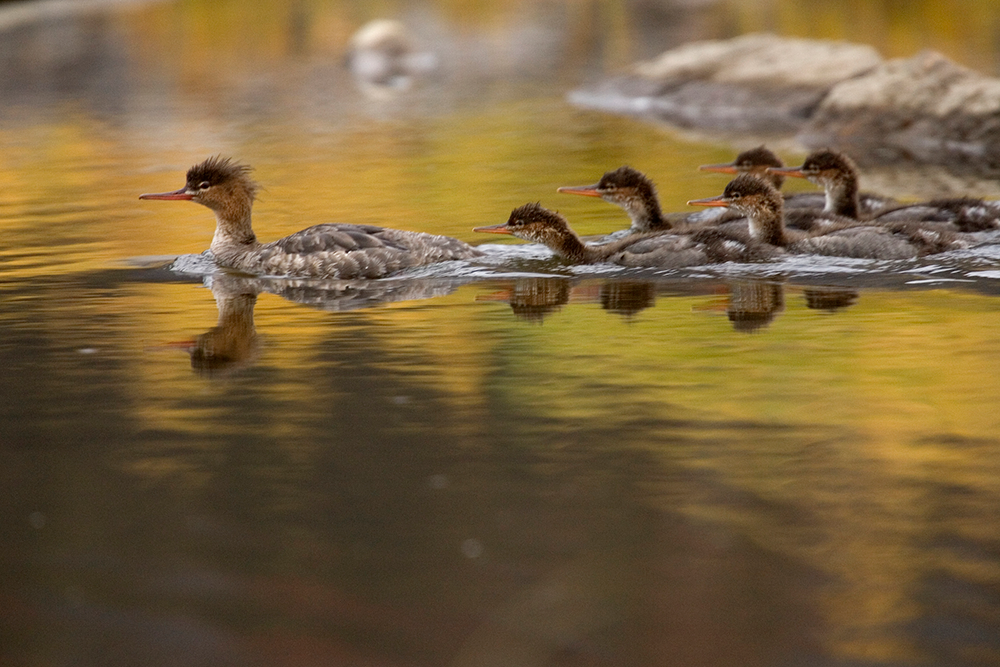
ANWR is home to many species: at least 200 types of birds, 37 land and 8 marine mammal species, and 42 kinds of fish. (Photo: Hillebrand/USFWS; Flickr CC BY-NC-ND 2.0)
CURWOOD: What sense does it make that the President is offering oil leases, oil and gas leases, off the Atlantic coast?
TAUREL: Well, look, I think we need to take a step back and look at kind of our broader energy policy. We've got a problem with climate change that we need to address and the President has been taking more steps than than any President in the history of United States. We wish that some areas of this plan that he put out on offshore drilling weren't included in the draft plan. The Atlantic is a place that lots of people live, they go fishing, they go to the beach. Those areas are at risk based on what we've seen from the BP oil spill. That oil is unfortunately not containable, it spreads far and wide and so lots of people's beaches are unfortunately at risk if that drilling were to go ahead. And then there's also drilling that will be happening up in the Arctic Ocean that we're also concerned about the impacts to the wildlife and the Alaskan natives that do subsistence fishing and hunting up there. So we think he's done a lot, but we hope that as this kind of draft offshore drilling plan goes forward that they pull some of those areas back and recognize that spills are just putting too much of our beaches and coastal economies at risk.
CURWOOD: Before you go, Alex, what kind of legacy is President Obama creating for himself with these moves regarding the Arctic National Wildlife Refuge and other items?
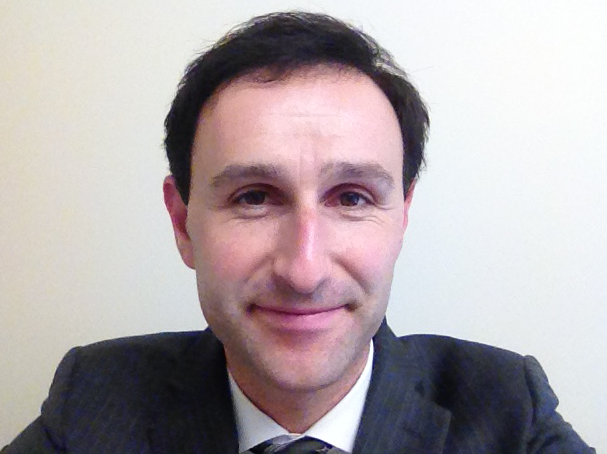
Alex Taurel is the Deputy Legislative Director at League of Conservation Voters. (Photo: Courtesy of Alex Taurel)
TAUREL: There's no doubt that he's going to be going down as is one of the greenest Presidents that we've ever had. His legacy on climate change is absolutely assured, and on the conservation front, the Wilderness recommendation for the Arctic refuge really plays into a growing conservation record that's been really strong, in particular of late. He's been designating national monuments, which is what's in his authority to protect public lands, and we've seen some really awesome landscapes protected in southern New Mexico at the Oregon mountains, outside of Los Angeles at the San Gabriel Mountains, he's designated an expansion of the largest marine national monument out in the kind of remote Pacific islands. So doing an absolutely fantastic job on conservation and protecting some really special places that we've inherited and making sure that they're available for future generations, and doing that a time when you’ve got Congress not doing very much to protect special places, but in fact interested in opening them up to development, so a real legacy that that he's been establishing on conservation as well as climate change.
CURWOOD: Alex Taurel is the Deputy Legislative Director with the League of Conservation Voters. Thanks, Alex.
TAUREL: Absolutely. Thanks, Steve, for having me on.
Related links:
- More on Protecting Alaska’s Arctic Habitat in ANWR
- More about the Oil and Gas Leasing Program
- Interior Department Announces its Draft Strategy for Offshore Oil and Gas Leasing
- Detailed maps of Obama’s offshore drilling plan
Alaskan Oil Economics
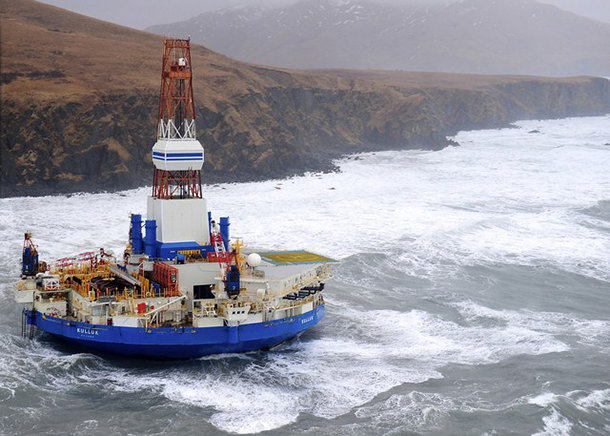
Deployed in Alaska in 2012, Shell Oil’s Arctic drilling rigs, the Noble Discover and Kulluk, were cited for a series of environmental and maritime violations. (Photo: Day Donaldson; Flickr CC BY 2.0)
CURWOOD: For years, advocates for the oil industry have pushed to open up the Arctic National Wildlife Refuge for drilling, and it's a top priority for many Republicans, including Lisa Murkowski of Alaska, who now heads up the Senate Energy and Natural Resources Committee.
Murkowski has sharply criticized the President’s bid to expand the wilderness area of ANWR.
But underlying the bluster is a question...with oil priced around $45 per barrel, how much economic sense does it make for oil companies to expand drilling in such a harsh environment?
It’s a question for Joe Stanislaw, an expert on energy and technology investment strategy. Welcome back to LOE.
STANISLAW: Steve, you’re very good to have me.
CURWOOD: So, we understand that the President's call to designate the millions of acres of ANWR as Wilderness effectively takes the coastal plain of ANWR off the oil market if that were to go through. How much sense does it make for oil companies to be expanding drilling in such a harsh financial environment as we have now? Oil is under $50 a barrel.
STANISLAW: I think if you thought about what the President's action means in the very short-term to medium-term from the oil company's perspective, not a whole lot to them. They have no intention of going there anyhow right now given everything that is going on in the oil market. Prices dropping from $100, $110 down to the low $40s. They have other concerns on their mind. And also, they have other low-cost prospects to be developing. Those prospects, if they were in the market or are on the market, we'd be out 10, 15, 20 years for them if they're really thinking about wanting to go there. That's not a short-term area for potential development.
CURWOOD: Talk to me a bit about the oil that is in ANWAR? How much is there, and what would it cost to get it out?
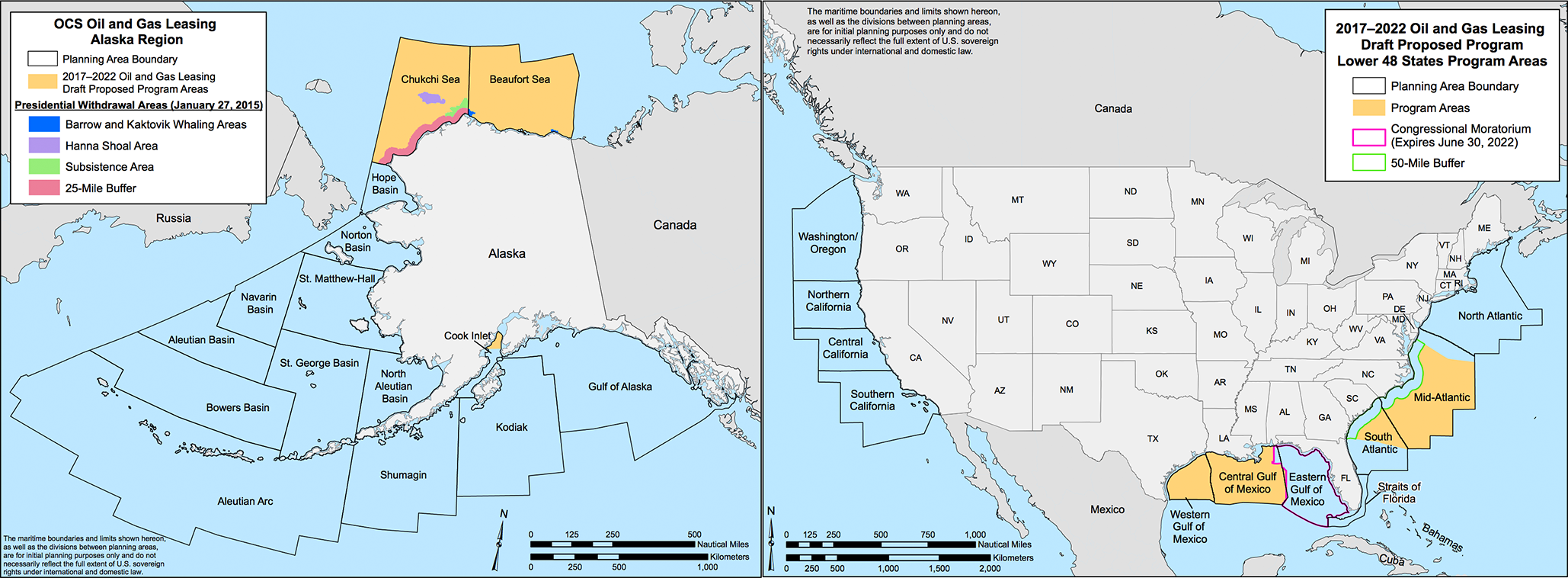
Permissions for offshore oil and gas drilling leases outlined in the draft of the Interior Department’s 5-year plan for 2017-2022. (Photo: Bureau of Ocean Energy Management)
SANISLAW: You know, you ask a very intriguing question. How much oil is there? We don't know. There has been no seismic done which has been off-limits by federal mandate. There have been, I will call them, “informed guesstimates” by a very credible institution called the Energy Information Administration making guesses based on other areas that might look like ANWR to say what resources could look like; how much, is a guess.
CURWOOD: Now at almost the same time the President has said that he's moving to designate much more of ANWAR as Wilderness effectively that will place it off-limits to the oil drilling. He also said that there will be new leases offered for offshore Arctic oil that is in the Arctic Ocean. How interested do you think industry is in that prospect given the hard time that Shell had dealing with the Chukchi Sea just this past year?
STANISLAW: Most of the world’s oil and gas industry look to the Arctic as maybe a potential resource, but in the next few years - five, 10, 15 – it’s sort of - in many people's minds, it's off their minds. I won't call off-limits, but it's not the first thought in their minds. They have seen the challenges Shell has had - some of them unexpected challenges - yes, companies like to think about it, but right now no-one really wants to put a lot of effort into this.
CURWOOD: So, right now, the Hill is battling over Keystone legislation that the President has promised to veto. Looking ahead, how important is this struggle in terms of the oil market?
STANISLAW: I think part of what the President and the administration has done is put out their bones, attractive bones in many ways. The oil and gas industry, the offshore southeast US, for example, is leasing; the Arctic, more leasing in the national reserve, so that when they veto Keystone all the industry won't be mad at them. This is a political issue, and I think he'll veto. And at the end of the day, one has to ask, given everything else that's going on, and the length of time that's been in the works, does it get developed? And the developers must be asking that question too, although they have sunk so much into this they want to have it done, but I think the veto comes into play.

Joseph Stanislaw is a financial adviser on international markets and politics. He is also the co-founder and former president of Cambridge Energy Research Associates, and directs the J.A. Stanislaw Group. (Photo: Courtesy of Joseph Stanislaw)
CURWOOD: So this is more politics then concerns about the oil supply?
STANISLAW: This is definitely about politics, rather than concern about oil supply. I’ll add another dimension, if you'll allow me. I think the big issue here, like so many issues in the United States is federal versus states rights. And I think the real issue that Alaskans are raising is - it should us who has the right to say yes or no, not the federal government. And that's the old-fashioned debate we've had in this country forever. On the one hand, Alaska doesn't agree. But the southeastern states very much agree with what the President's done, which is a line of area that was closed, "stranded", now is open. So they're happy, they don't mind that federal intervention. On the other hand, Alaska says those are our lands that might be developed as our future resource, our future income stream. Should we be the ones that say yes or no to it rather than the federal government? This is the age-old debate in the United States.
CURWOOD: Joe Stanislaw is an expert on energy and investment strategy and the founder the JA Stanislaw Group. Thanks so much, Joe.
STANISLAW: Steve, always a pleasure. Thank you.
Related links:
- Interior Department’s press release for a Proposed Offshore Oil and Gas Leasing Program for 2017-2022
- Shell to Revive Plans to Drill in Arctic
- More about the Oil and Gas Leasing Program
- Interior Department Announces its Draft Strategy for Offshore Oil and Gas Leasing
- Detailed maps of Obama’s offshore drilling plan
[MUSIC The Police -- "Walking in Your Footsteps"]
CURWOOD: Coming up...searching out the healthiest and most sustainable protein from the ocean. Stay tuned to Living on Earth.
[CUTAWAY MUSIC: Artie Traum,“Golden Gate Fog”, Meetings with Remarkable Friends, 1999]
Beyond the Headlines
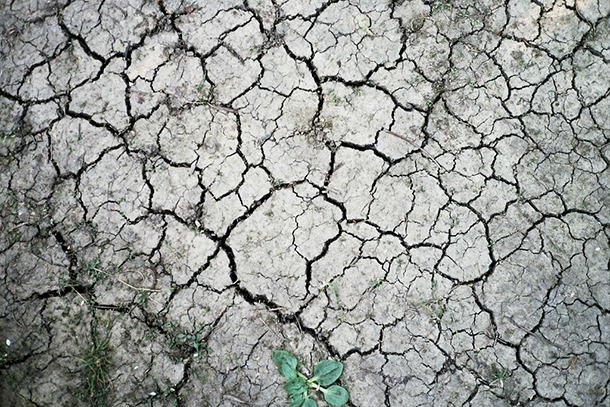
Sao Paulo, Brazil is in its worst water crisis in eighty years. (Photo: Ewan Bellamy; Flickr CC BY-NC-ND 2.0)
CURWOOD: It's Living on Earth, I'm Steve Curwood. Time to head off beyond the headlines, along with Peter Dykstra. He’s with Environmental Health News, that’s ehn.org and the DailyClimate.org, and joins us on the line now from Conyers, Georgia.
Hi Peter - what’s caught your attention this week?
DYKSTRA: Hi Steve, today we’re going to talk about water – a few big new problems, a couple of wacky get-rich-quick schemes, and then a couple of helpful resources – a little liquid news-you-can-use.
CURWOOD: All right, well let’s get the problem stories out of the way first.
DYKSTRA: Here in the U.S., we’ve been focused on the immediate, in-your-face news about crisis and drought, but there are a few drought crises looming large elsewhere, and a few “sleeper” water stories here at home.
Sao Paulo is in a water crisis that even became a big deal in the Brazilian elections this past year, one that’s been called the worst water shortage in 80 years there. Less water, many more people, and it’s a major problem for one of the world’s largest cities.
Another one is in South Africa. In Cape Town, it was recently reported that the growing city is using 98% of its available water supply.
CURWOOD: Those situations pretty clearly don’t sound sustainable. What else?
DYKSTRA: Well, closer to home there’s a looming issue, particularly here in the southern U.S. There’s a slow-motion train wreck in the form of saltwater intrusion – where saltwater gets into coastal aquifers and renders them useless as drinking water sources. Our biggest population growth has been along our coasts, and that puts added strain on underground water supplies. Mix in a little sea level rise and the sandy, porous soil that dominates coastal geology and we could be building a coastal water crisis sooner rather than later. Science is just catching up with saltwater intrusion.
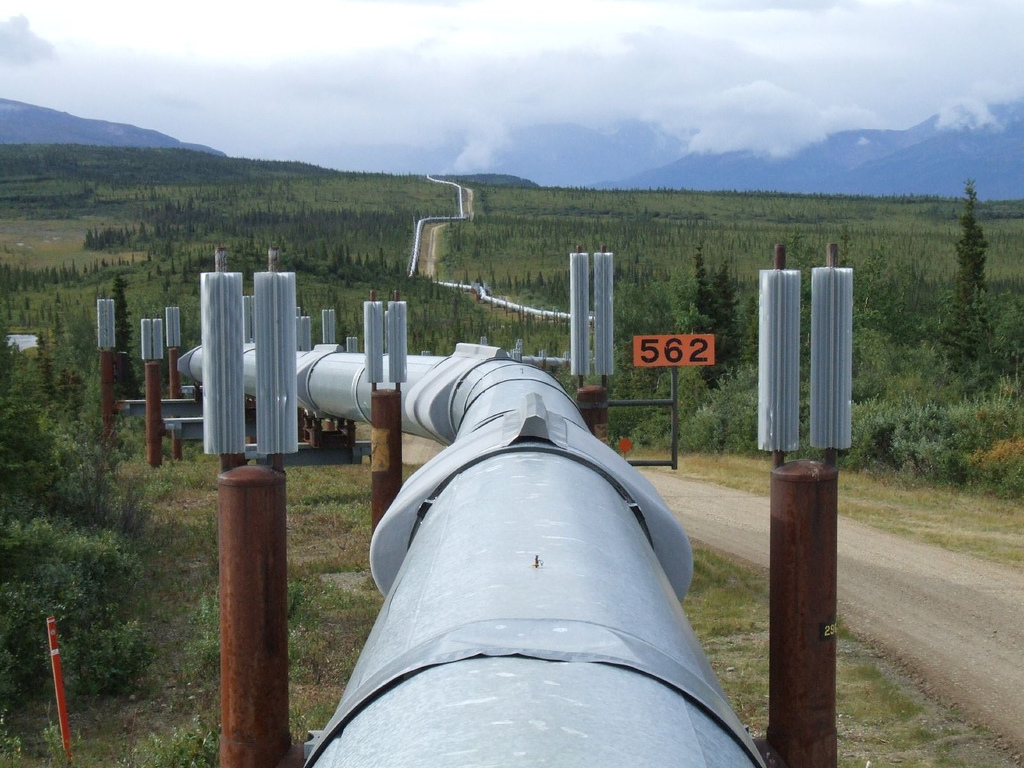
The severe drought in the American Southwest has prompted the idea to build a water pipeline from Canada to thirsty states like California and Texas. (Photo: Travis S.; Flickr CC BY-NC 2.0)
CURWOOD: Yeah, and typically, there’s a long lag between what science knows, and what the political process starts to deal with.
DYKSTRA: It’s also a looming problem in places from Vietnam to Bangladesh to the Adriatic Sea. But let’s move on to the harebrained get-rich-quick schemes on water.
CURWOOD: OK, Peter, you’re on.
DYKSTRA: Harebrained scheme number one keeps coming up in Canada, where there’s a lot of open space and a lot of fresh water. Over the years, plans were floated in Manitoba and Quebec to build massive freshwater pipelines to run halfway across the continent selling water out of Canada to send to thirsty places like California and Texas. A lot of people in Canada weren’t too thrilled by that idea.
CURWOOD: Well, I don’t imagine Americans would object too much, ’cause certainly a water pipeline spill wouldn’t be as bad as a tarsands pipeline spill.
DYKSTRA: No, but in addition to ecological damage from sucking up to ten percent of the region’s freshwater for export, it would cost a billion dollars a year or more just to pump the water, so you’d need a whole new energy infrastructure to send water south. You want to hear harebrained scheme number two?
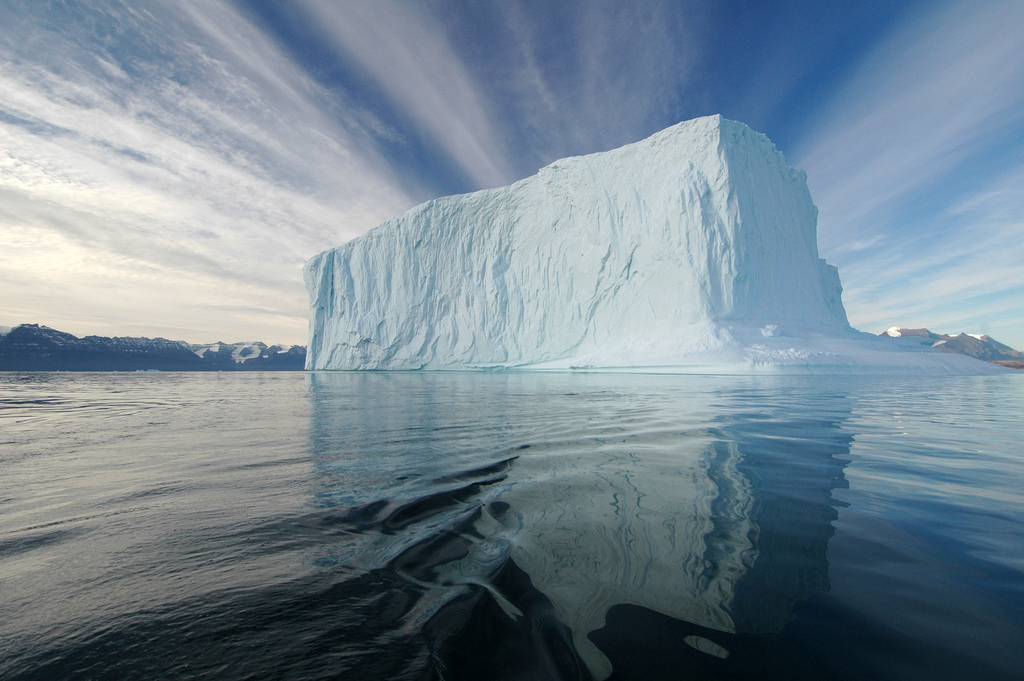
Another idea for quenching dry cities’ thirst, dating back to at least the early nineteenth century, is long-distance iceberg towing. (Photo: greenland_com; Flickr CC BY-NC-ND 2.0)
CURWOOD: Go ahead.
DYKSTRA: Long-distance iceberg towing. To me, this one has always had the makings of a crazy scientist movie or a crazy scientist cartoon. In 1956, John Isaacs laid out a scheme to tow an eight-billion ton, 20 mile-long iceberg from Antarctica to San Diego.
CURWOOD: I take it no one was willing to give him enough rope, huh?
DYKSTRA: Yeah, you might say that. Everyone from the RAND corporation to the Bulletin of Atomic Scientists to a Saudi oil Sheik have concocted schemes for iceberg towing, but no luck.
CURWOOD: And of course the eternal question – what could possibly go wrong? – comes to mind . . . Hey, Peter, give us those recommendations on water info sources.
DYKSTRA: Steve, three great resources for people concerned about water – two real-time websites and one three-decade old book. “Cadillac Desert” by the late Marc Reisner is still the best book ever written on how people fight over water. It’s an epic tale of corruption, dirty tricks and occasional violence over who gets water in the American West.
CURWOOD: Yeah, don’t they say, whiskey’s for drinking and water’s for fighting? So, what are the two websites?
DYKSTRA: The U.S. Geological Survey’s Waterdata site – the USGS has thousands of streamflow gages on rivers and streams showing how high or low the water is. I geek out on this and regularly check my local stream, the South River near Atlanta, where after a heavy rain, the water volume can grow by a factor of a hundred in a few hours. Google “USGS” and “waterdata” and find it.
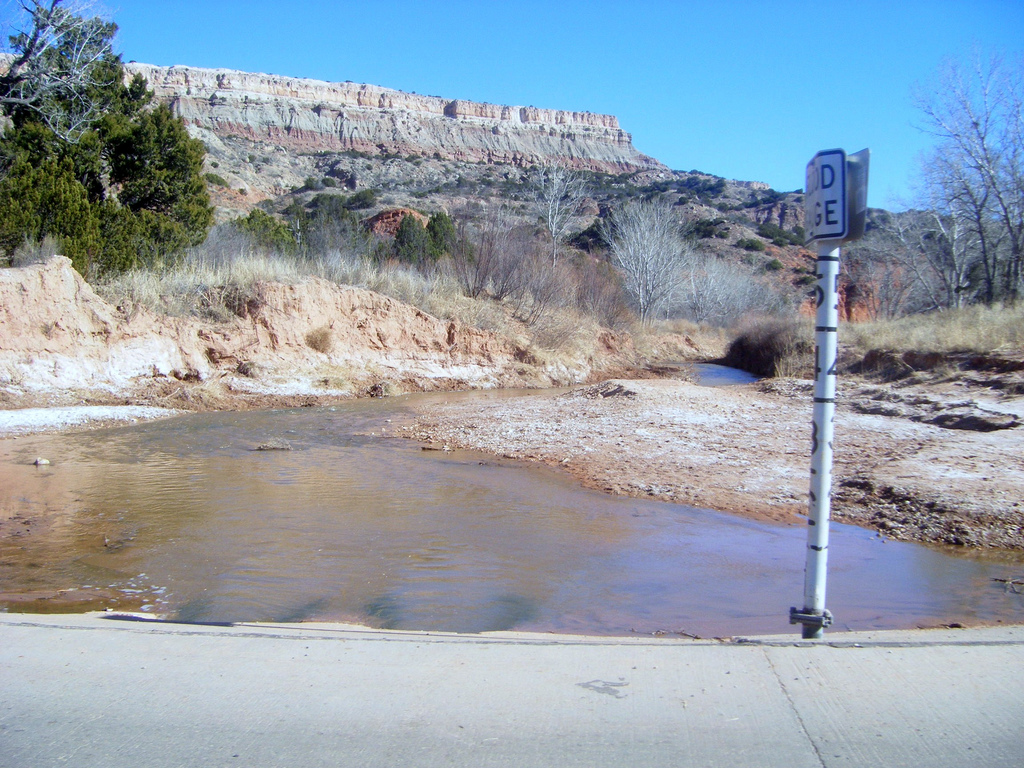
The U.S. Geological Survey’s Water Data site is a resource for checking the water level of any body of water: small streams to major rivers. (Photo: Bradley Gordon; Flickr CC BY 2.0)
And finally, The U.S. Drought Monitor updates once a week, on Thursdays. It’s run out of the University of Nebraska, and the Drought Monitor shows what parts of the country are doing okay for water, and which parts are hurting, like California and Texas in recent years.
CURWOOD: And you don't have to be a geek to come to our website to find out more on these things – that’s LOE.org. Peter Dykstra is with Environmental Health News and TheDailyClimate.org – thanks so much, Peter, for taking the time today!
DYKSTRA: OK, Steve, thanks a lot and we’ll talk to you soon.
Related links:
- Water Crisis Seen Worsening as Sao Paolo Nears ‘Collapse’
- South Africa’s looming water disaster
- USGS information on saltwater intrusion
- Ground-breaking survey maps coastal saltwater intrusion
- Water Exports – A Manitoba Bonanza?
- The Many Failures and Few Successes of Zany Iceberg Towing Schemes
- Reading L.A.: Marc Reisner’s ‘Cadillac Desert’
- USGS Water Data site
- U.S. Drought Monitor
[MUSIC: Harvey Reid—“The Water is Wide”, Steel Drivin’ Man, 1991]
The Perfect Protein
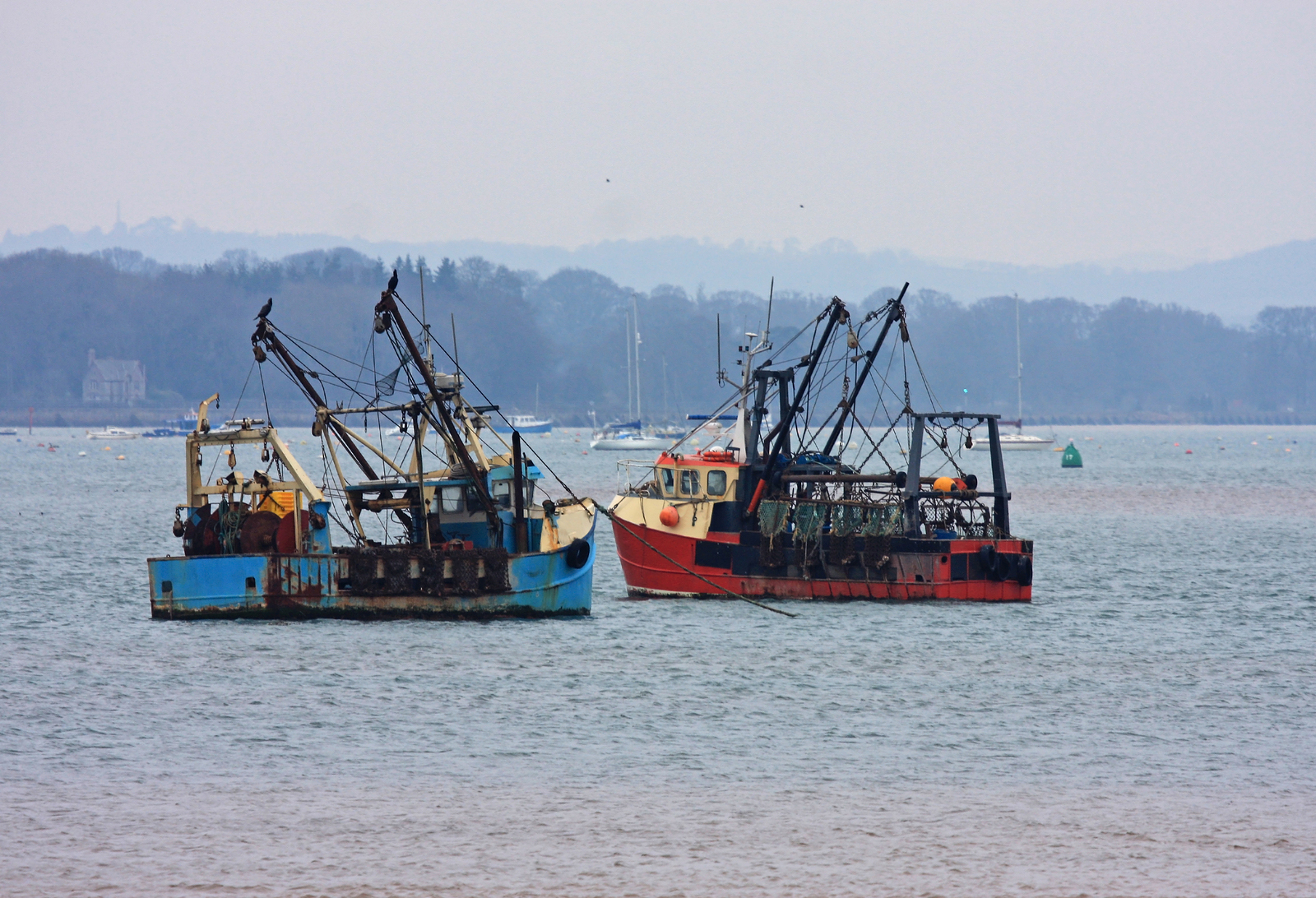
Trawler fishing boats (Photo: Bigstockphoto)
CURWOOD: Fish have long been hailed for their remarkable nutritional value, and you may be old enough to have been forced to swallow cod liver oil as your mother told you it was “brain food.” And today doctors say that switching from red meat to seafood can lower the risk of heart disease and cancer in humans. Andy Sharpless, the CEO of the marine advocacy organization Oceana thinks that our fondness for fish may have an evolutionary explanation.
SHARPLESS: It would stand to reason that since our bodies are so tuned up for fish, that they’re so good for us, that there must have been some time in our evolutionary history when we ate a lot of fish. People do speculate that maybe one of the advantages that our ancestors gave us is that they were amongst the first primates to figure this out, and get to the big buffet that is the seashore.
CURWOOD: Seems though, we've overdone it at that big buffet, and though we may be suited to seafood, it’s increasingly difficult to eat fish sustainably. Still, writing in his new book The Perfect Protein, Andy Sharpless argues that we can protect this healthy food and feed our growing population - if only we manage our fisheries better.
SHARPLESS: The problem we have is that is we love them so much that we have, in a very short-sighted way, depleted the ocean bank account, so that the interest, if you will, that an abundant ocean could provide is no longer big enough to feed the mouths that want to eat it. And that’s been driven to a large part by bigger and more industrial scale fishing - those have been the real culprits. Really big boats applying very advanced technology in a very short-sighted and very aggressive fishing practice, and the people responsible are both the government managers who should be setting the rules to keep this resource abundant, and, of course, the bigger fleet operators who have been pushing hard for that.
CURWOOD: You say fish is really good for us and we ought to have it, but we’re eating too much of it. I mean, maybe we should be just giving up on fish.
SHARPLESS: Well, I am of the opposite view. I think that what we have is a very good opportunity to increase the productivity of the ocean by better management, to do so relatively quickly within five or 10 years, if you will stop overfishing, you can rebuild the bank account in the ocean, you can see, therefore, a sustainable level of return each year. In fact, scientific estimates are that if a relatively short list of countries would do a good job of managing their oceans, we could see an improvement on the order of 20 to maybe even 40 percent in the total world catch from the previous peak in the late 1980s and have that available for people to eat forever. That’s what good management could produce and do so well in time to have it available for 2050 - when we’ll have another two Chinas worth of people living on the planet.
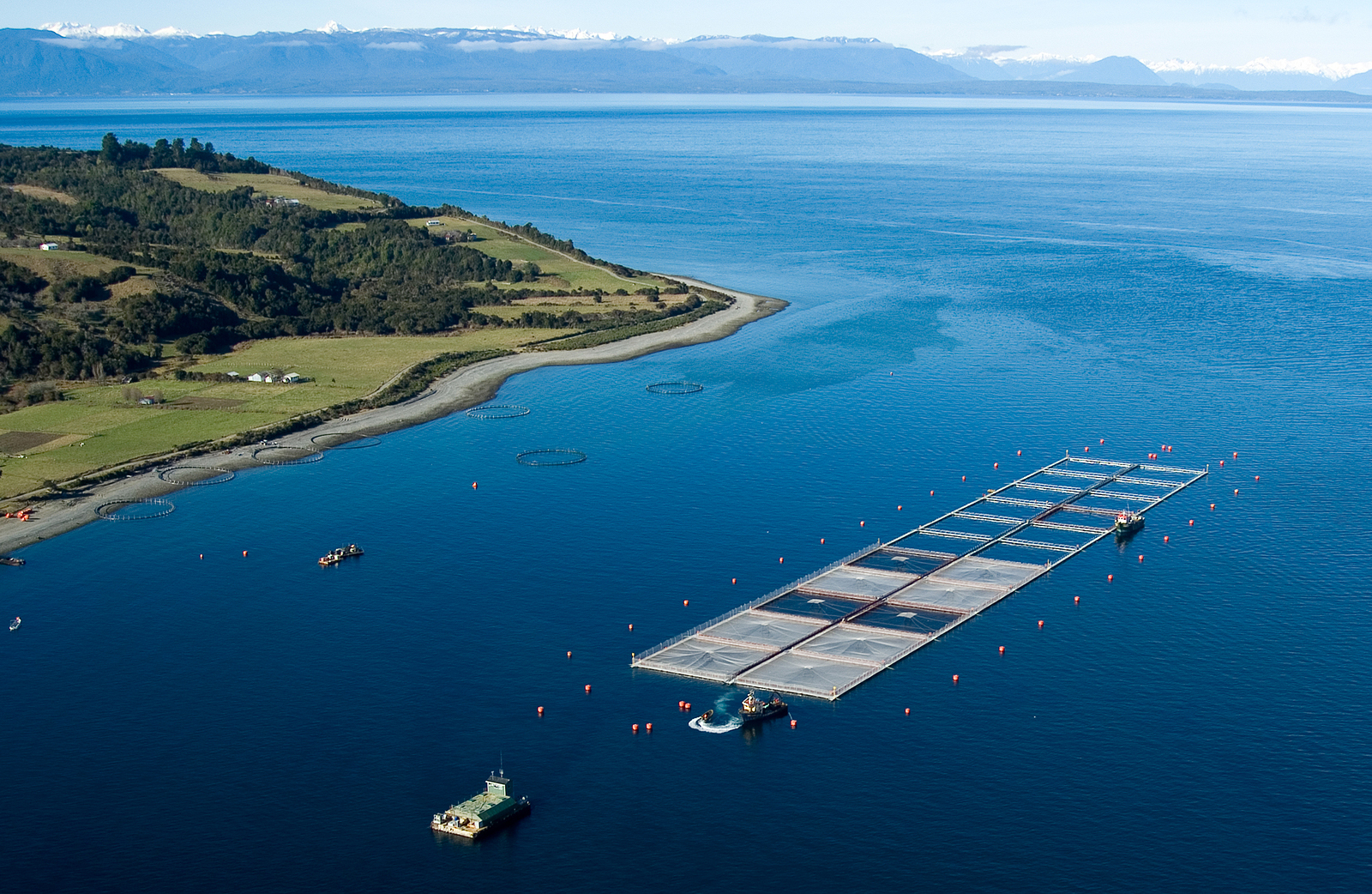
Salmon farming in Chile (Photo: Bigstockphoto)
CURWOOD: What are your rules for managing fisheries? I think you have three.
SHARPLESS: Yes. Set and enforce scientific quotas. Protect the nursery habitat, the areas that small fish need to be able to grow up and not be eaten before they get to reproduction age; protect them from being destroyed by fishing gear that drags along the bottom. And lastly, manage the accidental killing of non-target species that’s called bycatch. If you will do those three things, you will increase ocean abundance. You will increase spawning stock, and you will have more fish. And typically, you will get that in a five or 10 year period.
CURWOOD: And by the way, how’s the United States doing with that vision that you have?
SHARPLESS: We are, I’m happy to report, one of the better managed oceans in the world. In 1995, in an act of bipartisanship that used to be possible in our country, President Clinton signed a bill that was sponsored by Senator Stevens, a leading Republican senator from Alaska, which tightened the rules on fishing in American waters. And essentially what it did was, it said to the regulators in Washington, you need to set scientific quotas, you must protect nursery habitat, and you must manage what’s called bycatch. In essence, you’ve got to stop overfishing. You’ve got to let the ocean bank account build up. And our oceans are improving. The Pacific in particular has been relatively well-managed. We are the fourth largest ocean country measured by the size of our catch. And we are now able to say, to hold up our heads reasonably high in the world and say, look, we’re showing you how this can done well, and we’re managing our fisheries well.
CURWOOD: Talk to me a bit about the state of fish farming, and how much of a solution to the problem it might be to depleted fisheries.
SHARPLESS: Yes, fish farming seems intuitively, doesn’t it, like it should be a part of a solution. I mean if you’re eating a farmed fish, after all, you’re not eating a wild fish. And if wild fisheries need some space to rebuild; let’s all go eat farmed fish. That’s an intuitive, but in some cases wrong logic. Here’s what you need to know when you’re thinking about eating a farmed fish. You need to ask yourself, “what did this farmed fish eat?” And the answer to that question creates three categories of farmed fish - good, bad or indifferent. The “bad” category is if the farmed fish that you’re eating eats fish, if it’s a carnivore. And what would be a common example of that that lots of people eat? Salmon. Salmon is a carnivore. It gets fed in its pens by the farmers wild fish that have been ground up into little pellets. I’ve been to see them in Chile in these ocean pens, they get fed what looks like dog food, they kind of smell like fish. And in the process, they convert four, five pounds of wild fish into one pound of farmed fish. And so it’s a reduction activity. Now at the other end of fish farming, there are farmers farming shellfish: mussels, clams, oysters. And this is something about which we are extremely enthusiastic, and people ought to eat as much of those good-tasting things as they can stomach because think about how they grow. They grow by filtering the water. They are eating algae that they are filtering out of the water. They are eating something that we don’t want to eat. And even better in some ways, an oyster farmer is that rarest of things in the world, he is a profit-making or she is a profit-making enterprise providing jobs who wants, indeed must have, a clean ocean, and, therefore is an ally in the battle against pollution.
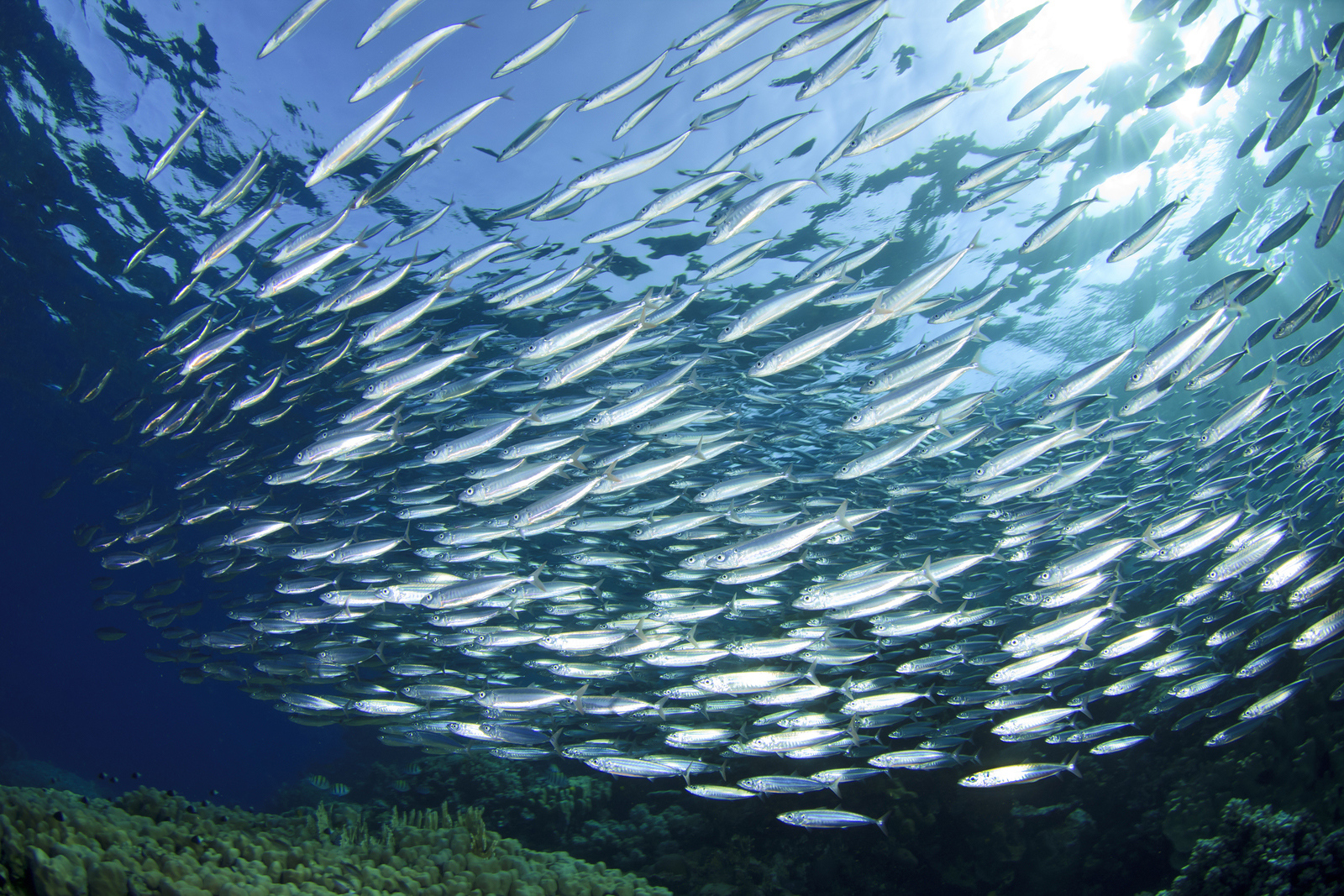
A school of sardines, one of the fishes Andy Sharpless recommends eating more of (Photo: Bigstockphoto)
CURWOOD: So, tell me, as a society, which fish should be eating more of, and which ones should we be eating less of?
SHARPLESS: So we’d like to suggest four, or depending on how you count it, five, simple rules. Eat wild; eat smaller species; eat local or domestic; eat all the farmed shellfish I mentioned - oyster, clams, mussels - that you can; and I’m sorry to say, you’ve got to swear off shrimp.
CURWOOD: Shrimp?
SHARPLESS: Yes, it’s bad news, I’m sorry. There’s no way to get a shrimp and feel good about what you’re doing for the future. Wild shrimp are caught in a process that produces very high levels of what’s called bycatch. And farmed shrimp are farmed in shallow pens typically in tropical countries that are often managed in a very short-sighted way and end up wrecking and contaminating coastal zones. It’s not a pleasant picture to go to Belize where I’ve been and see ocean coastal zones once the shrimp farmers have been through them.
CURWOOD: Now your book seems to present a bit of a conundrum. On the one hand it seems to be advocating saving fish so we can eat more of them. I mean, how fair is that safe to say?
SHARPLESS: Yes, I think that’s a wonderful and provocative summary of my message, and I agree with that. I am saying that. And it does seem kind of counterintuitive. And the reason it does is that ocean fish are the last wild animal that we eat a lot of - all over the world. And because most of what we eat is farmed, we have developed a different relationship to it. But the logic of saving these fish so that we can eat them is no more unfamiliar than the logic one brings to saving money in a bank account or investing in the stock market. We do that because we want the interest, or we want the dividends so that we can spend it. We don’t save our money without the idea of someday spending it - or spending the interest and dividends on it. And that’s the logic that we’re bringing to the moment we’re in on the oceans.
CURWOOD: Andy, what gives you hope? Give me some examples of people who are working to sustainably manage fisheries in the way that you say we should.
SHARPLESS: Well, you can go to the Norwegian cod, which was very badly managed by the Norwegians over 40 years, from the mid-1940s up until 1980s. They finally got around to putting discard bans and the fish came back dramatically in five or 10 years. The New Zealanders had a Rock lobster mismanagement problem, put fishing limits on - again in the ’80s - that fishery has rebounded. The Norwegian herring, the US haddock, which we mismanaged for 30, 40 years, from ’65 we punished this and drove it down until very low levels in the early 1990s, put fishing limits on, and it has now very strongly rebounded back to almost its original levels as spawning biomass. One of the wonderful things about fish is they are an incredibly powerful and robust part of nature. If we will give them a little bit of room, they will rebound. And you don’t have to wait 100 years for the rainforest to grow back. You can in our lifetimes, go back - plan to go back out into the ocean and see that there’s more fish out there, that we can raise our catch levels, that we can give people more jobs, and that people can eat a lot of this healthy and wonderful protein.
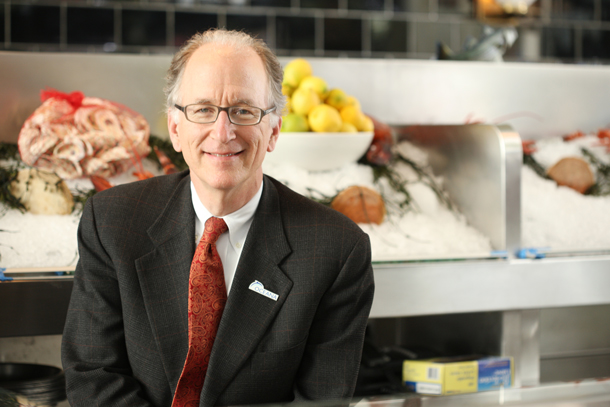
Andy Sharpless is the CEO of Oceana and author of The Perfect Protein. (Photo: Oceana)
CURWOOD: The end of your book is filled with sustainable seafood recipes. Why did you include this section in your book?
SHARPLESS: Well, you know, we really wanted it to be clear that we believe that people should eat seafood. And so we asked ourselves, how do we make that totally unambiguously clear in the book, that this is a conservationist book that is promoting seafood consumption? Putting recipes in was good for that dimension. Also frankly, if you talk to people about the category called ‘food’, you get a lot more attention than if you talk to people about the category called ‘these creatures that live on the planet with us’. So we wanted this book to have as big an audience as possible. And so we wanted to make clear to all the people that love food, this is a book that would appeal to them. One of the nice things about this moment, this kind of a “foodie” moment that we live in is that there’s some wind at our back. And part of the message of the book is to encourage people to eat things like sardines that people may not be so familiar eating.
CURWOOD: You know, I have to confess, there’s some small fish that I like, but I’m not a big fan of anchovies.
SHARPLESS: [LAUGHS]
CURWOOD: Have you got a great anchovy recipe?

The Perfect Protein (Photo: Oceana)
SHARPLESS: There is. There’s a great anchovy recipe in here by Hugh Fearnley Whittingstall who's a British chef. Yes, I encourage people to get the book, Perfect Protein, and go to the anchovy recipe and give it a try.
CURWOOD: Andy Sharpless is the CEO of environmental non-profit Oceana, and author of the new book, The Perfect Protein. Thanks for joining us, Andy.
SHARPLESS: My pleasure.
Related links:
- The Perfect Protein
- Oceana
- More about Andy Sharpless
[MUSIC: Taj Mahal “Tom And Sally Drake” from The Real Thing (Columbia Records 1971)]
CURWOOD: Coming up...in the last of our series on Alaska, we visit the small town of Wrangell.
BARLOW: The people are friendly, the dogs are friendly, [LAUGHS] and it’s just a beautiful little town.
CURWOOD: A beautiful place on a wild and salmon-rich river. That's just ahead on Living on Earth. Stay tuned.
ANNOUNCER: Funding for Living on Earth comes from United Technologies, a provider to the aerospace and building systems industries worldwide. UTC Building & Industrial Systems, provides building technologies and supplies, container refrigeration systems that transport and preserve food, and medicine with brands such as Otis, Carrier, Chubb, Edwards and Kidde. This is PRI, Public Radio International.
[CUTAWAY MUSIC: Tian Jiang—“Peacock Suite/The Love of Namonuna and Zaosutun”, Peacock Dance, 2002]
Alaskan River Riches: A River Town in Transition
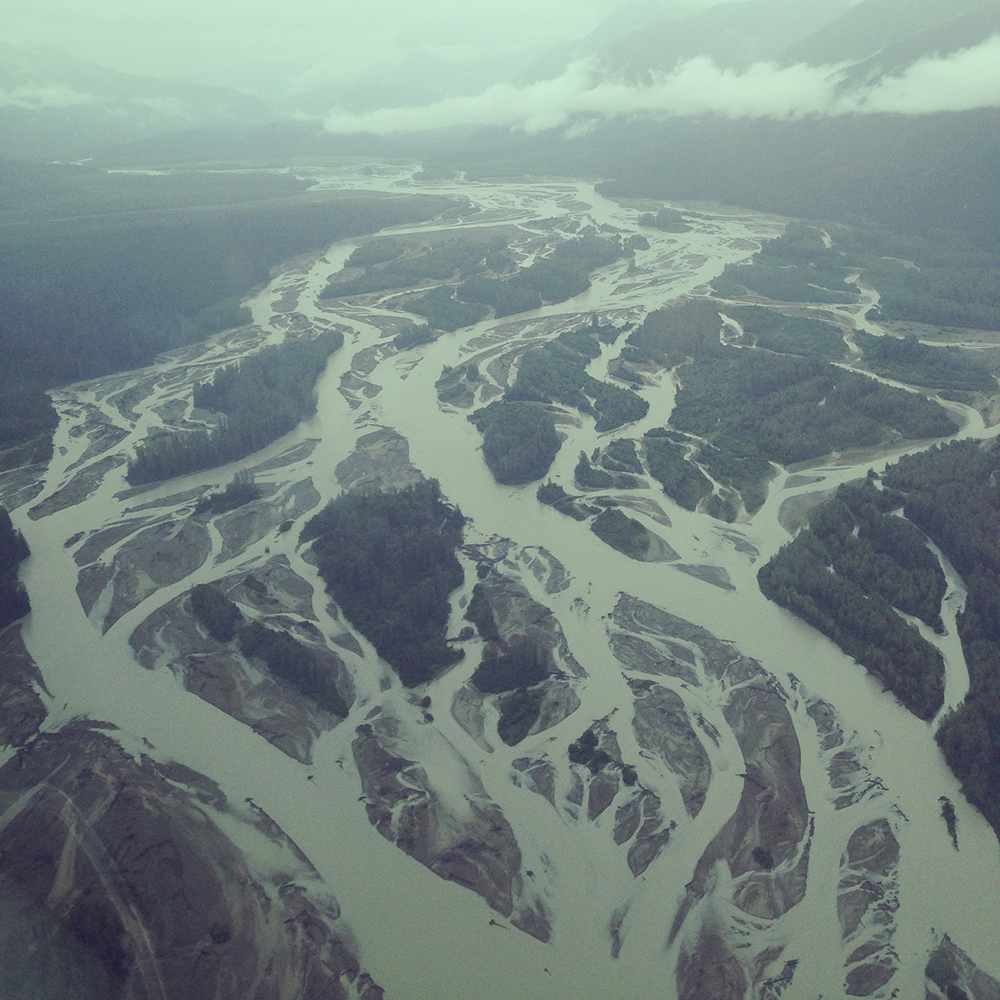
The Stikine River (Photo: Emmett FitzGerald)
CURWOOD: It's Living on Earth. I'm Steve Curwood. Southeast Alaska is a patchwork of tiny coastal towns, connected only by a network of ferryboats. The ferries run 24/7 all year long, carrying backpackers, businesspeople, and high school sports teams from one town to the next.
If you take the afternoon ferry heading south from Juneau, at about 5 in the morning you’ll get to Wrangell. This sleepy little fishing town is located on Wrangell Island, a few miles from the mouth of the Stikine River, and is home to just over 2,000 people. Every summer locals head out of town and travel up the Stikine to fish and hunt, and the river is the center of an emerging tourist economy. Living on Earth’s Emmett FitzGerald has his final report in his Alaska series from Wrangell.
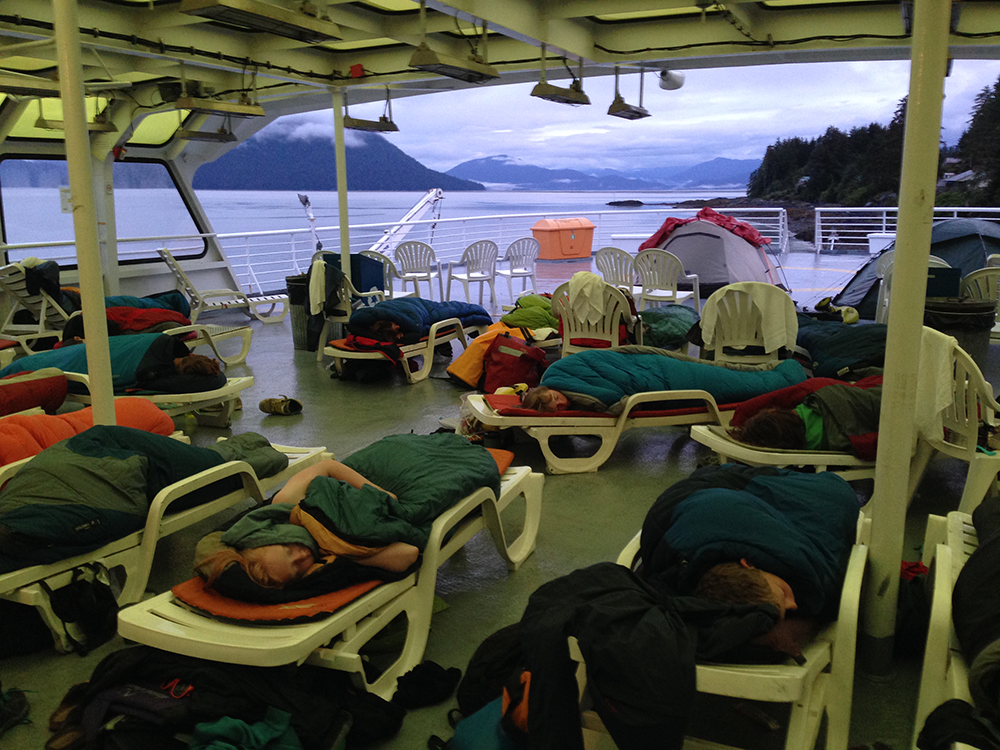
Passengers sleep on the ferry that runs between Juneau and Wrangell. (Photo: Emmett FitzGerald)
FITZGERALD: Nancy Barlow, a kind-faced woman of about sixty five, first came to the little town of Wrangell on a ferryboat 16 years ago.
BARLOW: I came up on the ferry, spent a month running around the interior, and then spent another month coming back down stopping at all islands along the Inside Passage and I stopped here.
FITZGERALD: Wrangell has two harbors, 4 bars, 1 hotel (the Stikine Inn), and the only 9-hole golf course in Southeast Alaska. Nancy says it didn’t take her long to fall in love with the place.
BARLOW: The people are friendly, the dogs are friendly, [LAUGHS] and it’s just a beautiful little town.
FITZGERALD: Now Nancy’s the manager of a youth hostel based in the first Presbyterian Church. Life in Wrangell is isolated, but Nancy says that she meets people from all over the world, and has neighbors of all species.
BARLOW: When you go for a drive you have to be careful; there might be a deer crossing the road, you might see a moose, oh there’s a bear over at the airport. It’s the natural environment that people down south don’t ever get to see.
FITZGERALD: One of the most striking aspects of that environment is the Stikine, a glacier-fed river that springs up in the mountains of British Columbia and empties into the sea in a muddy delta a few miles outside of Wrangell.
HAASATH: I can recall first time I went up the river I was eight years old.
FITZGERALD: Einar Haasath is an elder in Wrangell’s Tlingit community, one of the biggest tribes in Southeast Alaska. He says when it comes to the Stikine, his grandmother taught him everything he knows.
HAASATH: I can remember my grandmother she came to Wrangell in 1927 and the following year she met up with a couple of old friends and they took her up the river and they went after subsistence fish, and she continued to do for several years and kind of nstilled in me that that’s a good practice at least you can put food on the table.
FITZGERALD: So he follows his grandmother’s advice.
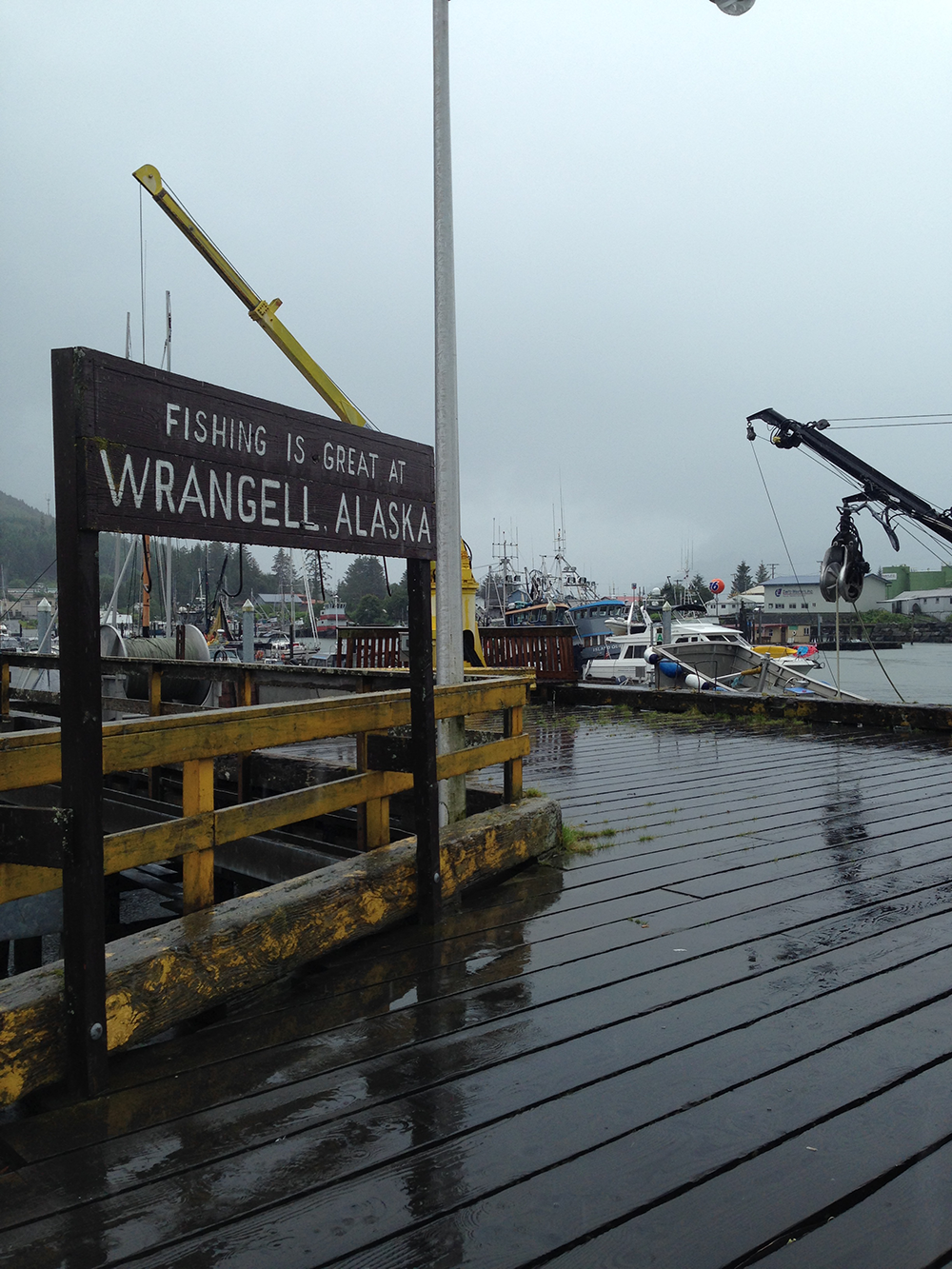
The commercial fishing dock in Wrangell (Photo: Emmett FitzGerald)
HAASATH: Each year I go up there and get sockeye and put that up for the winter, and do my moose hunting and I’m not successful all the time but nobody is. And then as far as berry picking and all that I gather high bush cranberry every year and bring it down. You know, it’s pretty productive.
FITZGERALD: When Einar was a kid he would take a riverboat 60 miles upstream, across the Canadian border and deep into British Columbia to a little river town called Telegraph Creek.
HAASATH: And I kind of thought yeah this is the place to be because there was a hustle and a bustle up there, and that was the first time I ever run into a horse. Saw a horse for the first time.
FITZGERALD: In Telegraph, Einar met people from the Tahltan First Nation, a Canadian Tribe from the Upper Stikine. The Tlingit and the Tahltan shared the river and its resources for centuries. The coastal Tlingit traded what they got from the ocean, shell tools and oil from a fish called the Eulachon, to the interior Tahltan for caribou hides, moose, and snowshoes. Marge Byrd, a Tlingit elder in Wrangell today, remembers the trade from when she was a little girl.
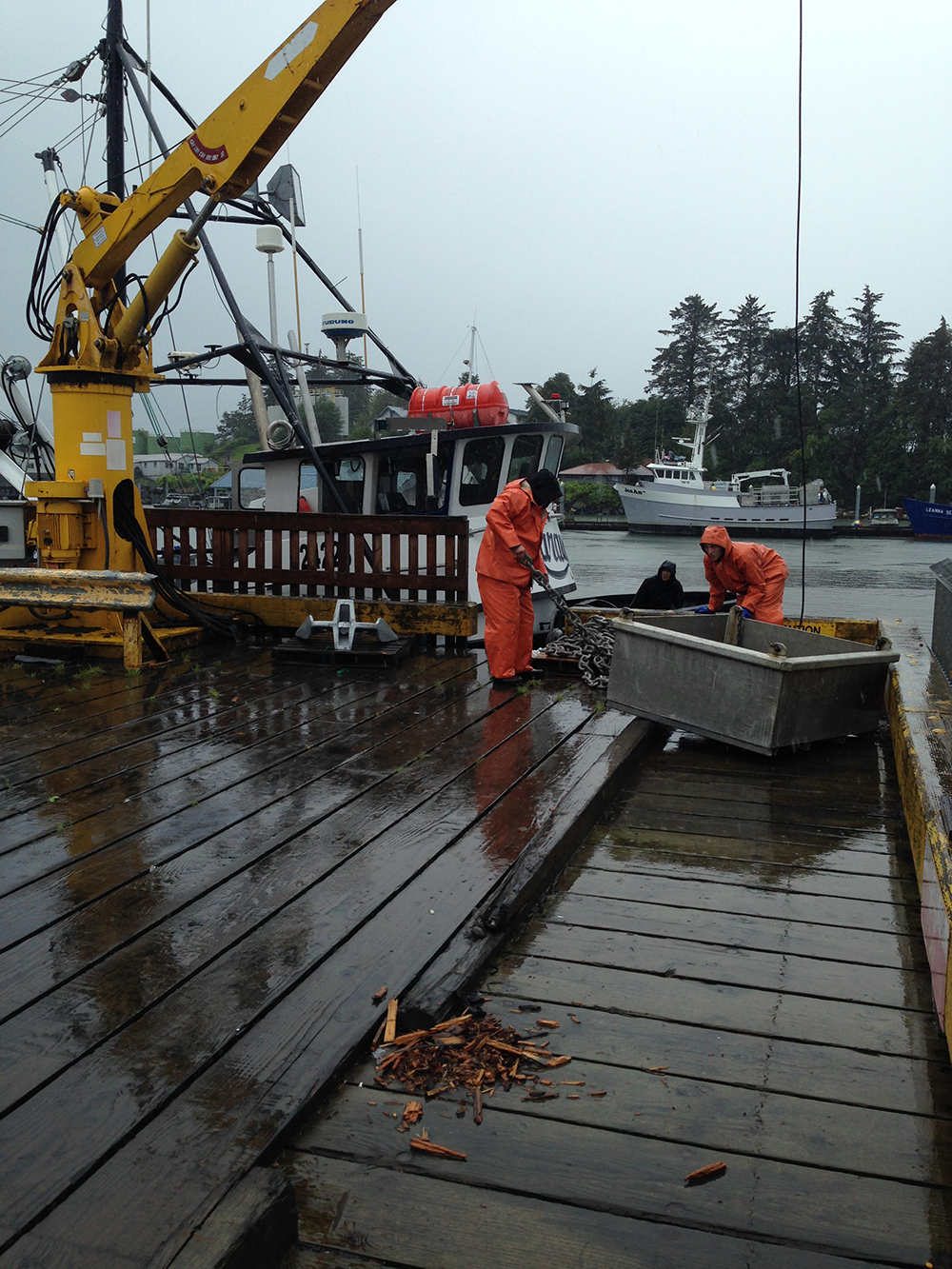
Fishing boat crew members load up their vessel. (Photo: Emmett FitzGerald)
BYRD: The people from Telegraph would come down there and bring their smoked moosehides and their dried fish because they can dry it up there, and trade, trade our halibut and different things we could get here with what they got up there.
FITZGERALD: But Native Alaskan’s weren’t the only ones interested in the river’s bounty. Russians arrived in the late 18th century in search of fur. And they found willing trading partners in the Tlingit, who often acted as middlemen, selling them otter and beaver pelts they got from the Tahltan at a higher price. Then the Hudson Bay Company got involved in the fur trade, and by 1850 the otter and beaver populations had collapsed. But in the 1860s prospectors discovered gold, and the Cassiar and Klondike gold rushes brought waves of settlers to the Stikine and its tributary the Iskut. By the turn of the century they had established the town of Wrangell at an old Russian fort a few miles from the river. The mineral resources in the area are vast, and Angie Eldred of the Southeast Alaska Watershed Council says that gold mining continued in the 20th century.
ELDRED: In the 1980s and up to I think the late 90s there were two mines on the Iskut where they were mining gold, it was a smaller scale operation, but they were shipping a lot of the ore out on hovercrafts and by air plane and so it went through Wrangell and it provided jobs.
FITZGERALD: But larger mines could be on the way. In 2014, British Columbia completed a 750 million dollar powerline to bring cheap electricity to the Upper Stikine. With that in place, three new Canadian copper and gold mines are now in development. Angie says that people in Wrangell have supported mining in the past, but these mines are a different story.
ELDRED: Wrangell doesn’t stand to gain anything. There’s no jobs coming to Wrangell we just stand to – you know - take on all of the risk if something were to go wrong.
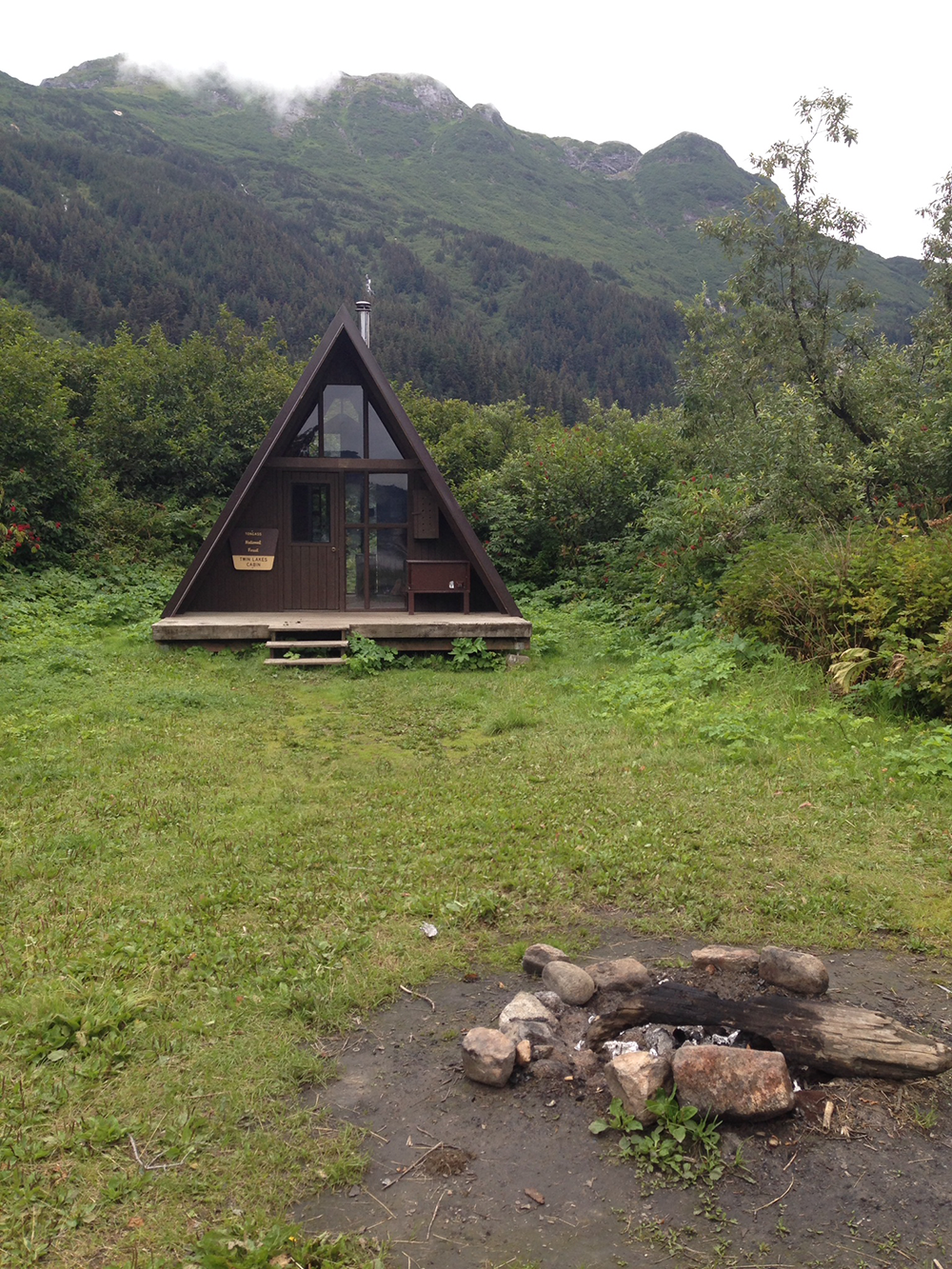
This Forest Service hut is one of the only buildings for miles in the Stikine-Leconte Wilderness area. (Photo: Emmett FitzGerald)
FITZGERALD: The new mines are Shaft Creek, Galore Creek and Red Chris.
ELDRED: And all of those mines are on tributaries of the Stikine River. So you know it’s all part of that watershed and if anything were to go wrong or there were to be a water quality impact it’s going to wash downstream and it’s going to impact all of our resources that are downstream and on this side of the border.
FITZGERALD: Angie’s not the only one concerned about the impacts of mining. Brenda Schwartz-Yaeger has lived in Wrangell her whole life, and takes tourists on boat trips up the river to see the wild glacial landscape of the Lower Stikine. I met her on board her jetboat in the rain.
SCHWARTZ-YAEGAR: Wrangell wouldn’t be here today or earlier if it wasn’t for the bounty of the river. The whole reason this community is here is because of the river. I mean the natives came down the river and settled this area because it was so rich and bountiful. And the reason it’s so rich and bountiful is all these nutrients in the river and all the fish.
FITZGERALD: Brenda’s family has lived in Wrangell for over a century, and they’ve always made their living from the river. Her grandmother was a trapper, and her father was a scientist who studied the Stikine.
SCHWARTZ-YAEGAR: My dad was a fisheries biologist for this area, game warden, and probably one of the first Caucasian men to walk most all of the tributaries of the Stikine, looking at its massive salmon runs.
FITZGERALD: The river runs through the 450,000-acre Stikine-Leconte Wilderness—a swath of rugged mountains with old growth spruce and hemlock crawling up from the river valleys. It’s crowded with moose, lynx, grizzly bear, and one of the largest seasonal gatherings of bald eagles in North America.
SCHWARTZ-YAEGAR: Wildernesses don’t really seem to work very well when they’re very small little postage stamps. In order for the ecosystem to really function you need this vastness and the Stikine, the significance is it’s one of these vast places left in the world that’s fairly set aside and a little bit untrampled on.
FITZGERALD: Brenda says the few hardy tourists who travel the river with her won’t forget that vastness.
SCHWARTZ-YAEGAR: I like to make them kind of take a breath and realize in a little bit of a way compared to all that vastness how insignificant we are. Cause we’re kind of used to controlling everything all the time, changing the temperature, changing the lighting, and I think it’s a good experience for us humans to every now and then be out of control a little bit.
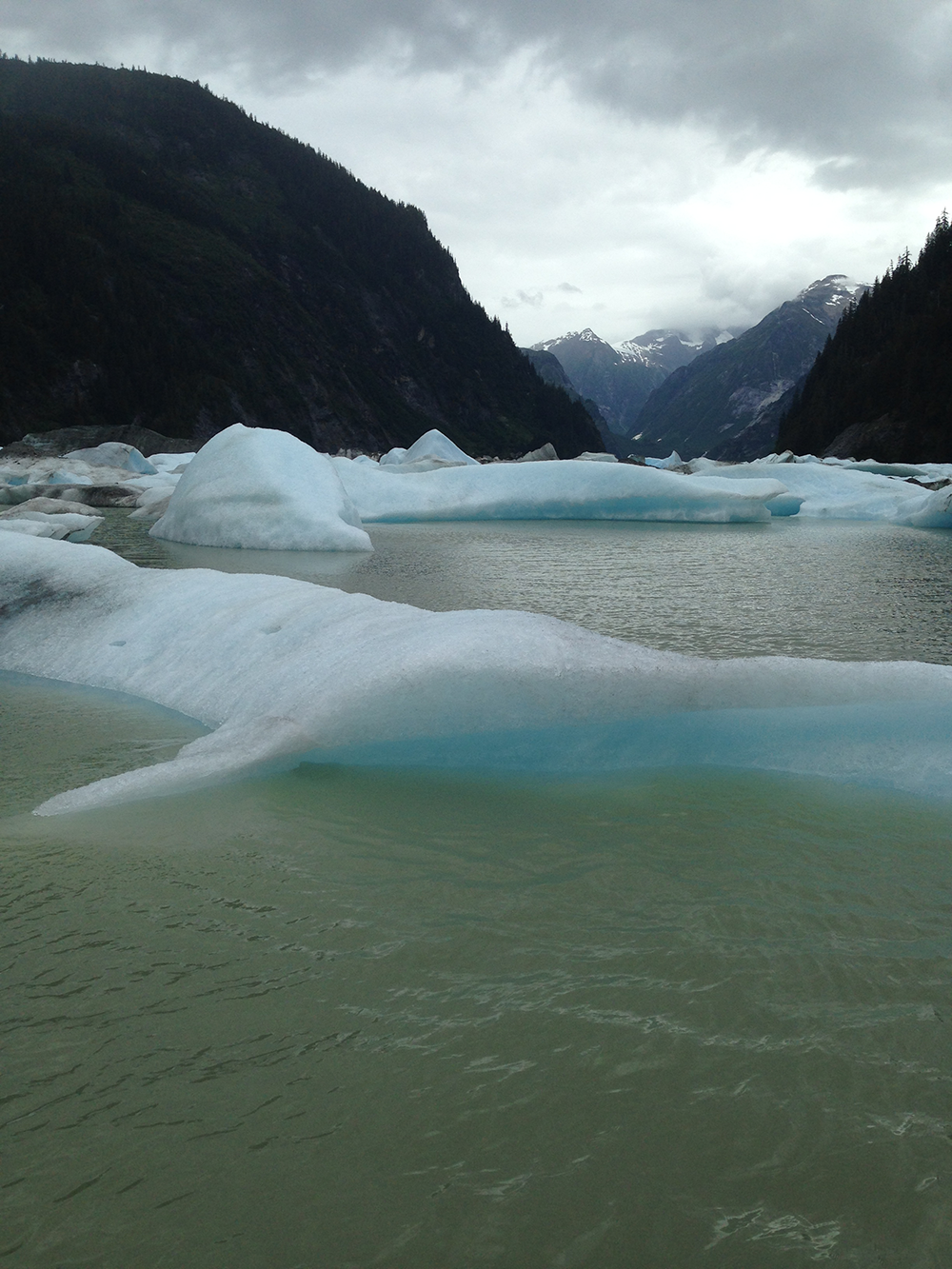
Shakes Lake, filled with icebergs that calved off of Shakes Glacier (Photo: Emmett FitzGerald)
FITZGERALD: Brenda’s all booked up this weekend, so I’m heading up the river with one of her friends, Mark Galla, burly, grey bearded, and wearing a red plaid coat like a good Alaska lumberjack. Mark runs one of the only other jet boat tours up the Stikine.
GALLA: 30 minutes time out of Wrangell and you’re kind of in the middle of a wilderness where you have great fishing, hunting, glaciers, you know, it’s kind of all here and right out our back yard.
FITZGERALD: Right now his backyard is surprisingly undeveloped, but that could soon change. In addition to mines, Mark says that hydroelectric power has long been considered on the Stikine and the Iskut. Throughout North America large rivers have been dammed for hydropower, and Mark says there aren’t many wild rivers left. But the Stikine is one of the wildest.
GALLA: Fastest free-flowing navigable river in North America. Meaning there’s no dams or obstructions along the course of its length to impede any type of flow.
FITZGERALD: It may be the fastest wild river in North America, but down here near the ocean, the Stikine runs slow and brown. It’s laden with silt dragged down by over fifty glaciers that feed into the river valley. Mark starts up the boat and warns us it’s going to be a bumpy ride.
[ENGINE MOTOR STARTS; DRIVING SOUNDS CONTINUE]
GALLA: The deep water tends to cut from outside corner to outside corners. There are a few places where those corners aren’t what they should be, which we’ve learned from the school of hard knocks. So I’m not just zigzagging and doing it all for effect, it actually has purpose. And there’s a lot of times where it looks like there’s a lot of water and there’s really none.
FITZGERALD From the boat the river looks narrow, but Mark says this is just one channel in a tangle of braided waterways. As warned, he jerks the jet boat all over the channel, dodging rocks and shallow spots. The muddy banks are covered with gnarled driftwood and entire trees, ripped out and dragged down here by the rapids upstream. Around a bend an island appears in our way and Mark pulls the boat to a stop.
GALLA: So this is one of the major places where the guys set their subsistence nets. It’s right around this island. There’s usually one or two of three nets dangling off this.
FITZGERALD: Mark says he come up here to hunt. Deer, bear, moose, even mountain goats.

Tlingit Elder Marge Byrd (Photo: Emmett FitzGerald)
GALLA: Most all the mountains that you see surrounding the whole river corridor have mountain goats in them.
FITZGERALD: He points out a cluster of them, just tiny white dots against the high green hillside. As a light rain starts to fall, Mark steers the boat down a small side stream. Around a bend our view suddenly opens up and we’re in a lake packed full of giant blue icebergs. Mark says the ice calves off of Shakes Glacier at the other side of the lake, then floats down here.
[SOUNDS OF ICEBERG LAKE]
GALLA: Everything gravitates to the outlet, so all the ice that comes off of the glacier ultimately is going to end up at this end.
FITZGERALD: Mark wants to show off the glacier, so he tries to steer the boat across Shakes Lake through the maze of icebergs.
GALLA: Sometimes you can work through the middle, but usually one side or the other you can kind of eke your way through and every time I come here I try it.
FITZGERALD: But it doesn’t work today. The hull of our boat grinds against an iceberg, and Mark has to back out the way we came in. On the way back to town we stop at a Forest Service hut to eat lunch. It’s a tiny A-frame, the only building in a sea of trees.
GALLA: My family moved up here because of logging, timber, in 1967. So I was 7 years old when they moved up here, so I just was in between jobs at 7 and I thought I’d go with them.
FITZGERALD: For most of the 20th century timber was the big industry in Southeast, Alaska. Timber companies signed 50-year contracts with the state to log the spruce, hemlock, and cedar of the Tongass National Forest. At the peak there were three sawmills in Wrangell, the largest employers in town. But despite large government subsidies the timber industry in Wrangell eventually went bust. Mark says it just wasn’t economical to harvest trees in such a remote location.
GALLA: You have to access the beach somewhere. Then you have to start building roads then you have to move all your equipment in to do all that, and it’s just all those expenses, tugs and barges and moving equipment, you know lower 48 or Canada, they start their trucks up and go do what they do
FITZGERALD: It’s a familiar American story. Just like old factory towns in the rustbelt, when the sawmills in Wrangell closed their doors, people left town.
GALLA: We used to be 3000 plus people, now we’re more like 2200 or so, so we took a pretty big hit on population really, by nearly a third. when that timber stuff went away, but we seem to have adjusted. People just diversify in different directions and do different things, for us it largely was tourism.
FITZGERALD: But there aren’t many tourists. Wrangell isn’t on Southeast Alaska’s cruise ship circuit. There aren’t any gift shops and only a few places to eat. Still a small contingent of outdoorsy visitors is giving the town a new post-timber identity, and the main reason they come is the river.
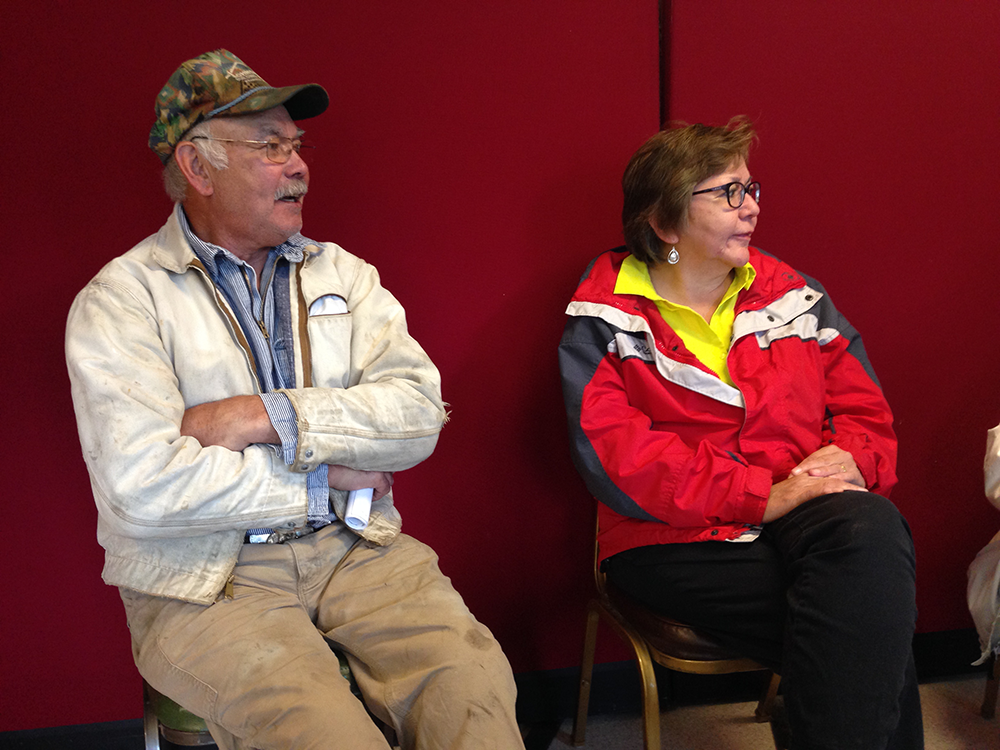
Tis Peterman and Einar Haasath (Photo: Emmett FitzGerald)
GALLA: In fact without the river I really doubt that Wrangell would be Wrangell. You know that’s kind of the big draw for us and I think kind of what put us on the map.
FITZGERALD: Tourism may be on the rise, but the biggest industry in Wrangell is fishing. There are two seafood processing plants with hundreds of employees, and tonight the harbor is packed with boats, back in town to sell their catch and refuel.
[SOUNDS OF THE STIKINE INN BAR]
One of those boats belongs Brian Meritt, an elementary school teacher and commercial fisherman. He meets me at the bar in the Stikine Inn, wearing a faded baseball cap and a NYPD sweatshirt. Brian says he’s been fishing since he was in elementary school.
MERITT: Started fishing with Dad, just kind of escalated from there. Bought my own boat when I was 19, put my way through college with it, and it’s just I’ve always had a boat, then I got a teaching job.
FITZGERALD: A lot of Brian’s students come from fishing families, and he tries to teach his classes in a way they can relate to.
MERITT: I’ve brought King Salmon in, filleted them on the table, show kids the bone structure, the spine, and we’ve talked about the skin. If I catch a grey wolf when I’m trapping I’ll bring the whole thing right into the classroom, set it on the table, and we’ll look at his paws his teeth, anyhow we do all sorts of dingdong things, we’ll bring in an octopus, sometimes I catch those in my shrimp pots we bring in an octopus check those out, its whatever’s around you bring in from the outside and its just a neat way to go with the kids.
FITZGERALD: Brian says that he takes each of his students out on his boat at least once during the school year. He knows his methods probably wouldn’t fly in any state other than Alaska, but that doesn’t bother him.
MERITT: Teachers contact me from California and say you know I’d be fired if I did that. I said well everybody knows me I’ve done it ever since I’ve taught I’ve been teaching for 25 years but it’s just an accepted thing in Wrangell, that’s how we teach science, that’s what the kids get to do, never had a complaint, ever, that I’m aware of.
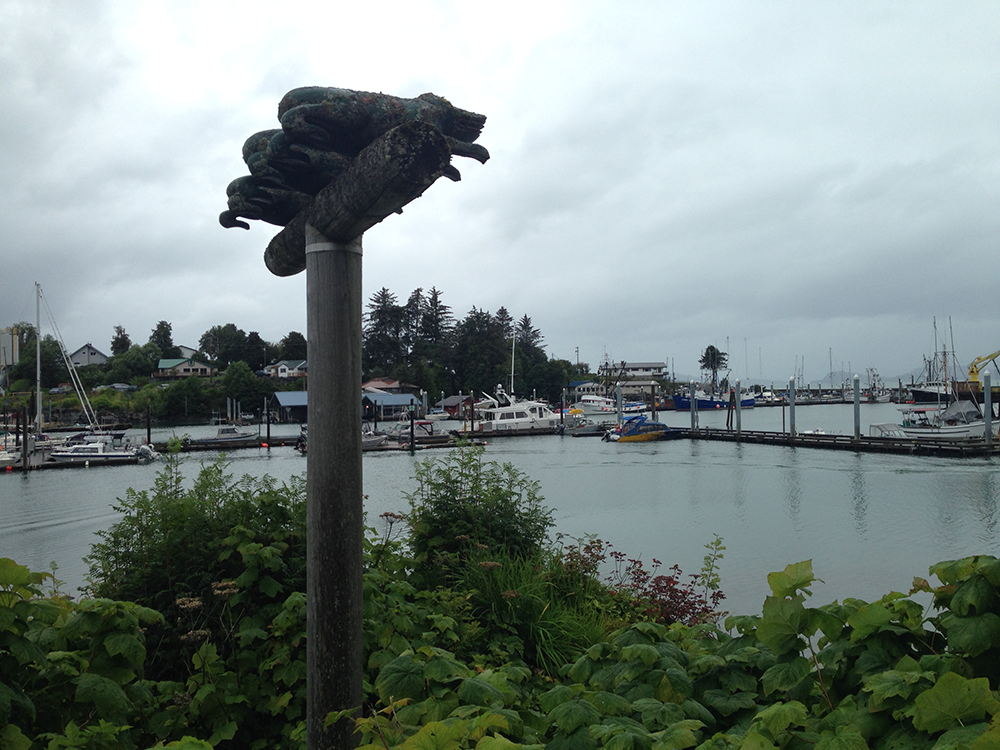
The harbor in Wrangell (Photo: Emmett FitzGerald)
FITZGERALD: With the school year about to start, Brian is in full fishing mode. In a couple days he’ll be heading out for King Salmon, the most coveted of the salmon species in Alaska.
MERITT: I’ll get up at like 2:30 in the morning, take off in the dark, run for an hour, start putting my gear in the water just as it breaks daylight. You’ll fish all day till at least 9 9:30 whenever it starts to get dark. Usually anchored up by 11o’clock sometimes 10:30, and then 2:30 - 3 day starts again, charge back out, and you will do that day after day as long as you’re catching King Salmon. Nothing is better than that. I mean you live for that.
FITZGERALD: Brian’s fishing boat is versatile. Sometimes he uses it to set a gillnet near the mouths of rivers like the Stikine, waiting to catch salmon as they swim upstream to spawn. But more often he’s trolling out in the open ocean, dragging long lines with baited hooks behind the boat. It’s not the most efficient way to fish.
MERITT: You catch 1/20th the amount of fish trolling that you do gillnetting.
FITZGERALD: But Brian says nothing beats the thrill of trolling for King Salmon. You have to pick the right tackle, set your line at the proper depth, and fight to land the fish once they bite. Brian says it’s almost like sportfishing, except you’re making money.
MERITT: It’s the game of the mind. It’s the challenge of it, and of course King salmon are worth 70 to 100 dollars apiece, versus a Dog Salmon’s worth 6 dollars. So you’re targeting the high dollar fish.
FITZGERALD: Though Kings are the highest dollar salmon, they’re also the scarcest. To supplement the wild stock, the State of Alaska and British Columbia release King Salmon reared in hatcheries. Alaska and BC have also set tight fishing regulations, allowing only small windows when you can fish for Kings. This Thursday is the beginning of the only King Salmon window this month.
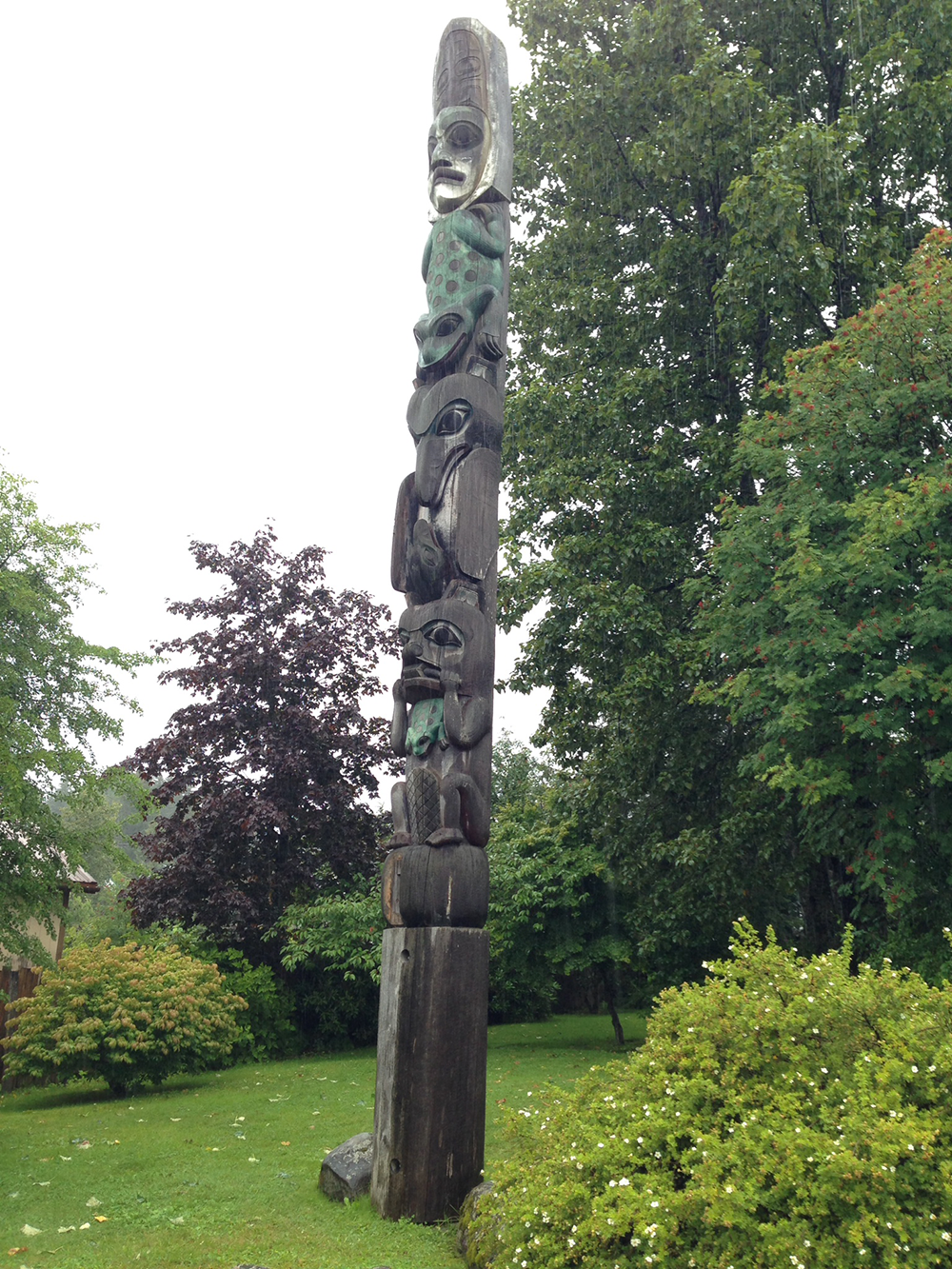
A Tlingit totem pole in Wrangell (Photo: Emmett FitzGerald)
MERITT: And if it’s blowing like a dog on Thursday most guys are going to tear off shore, try to get to the fish, and crash boom bash it’s dangerous, but you only got three days to catch these Kings in August. So anyway that’s going to be the danger factor.
FITZGERALD: Brian says that most fishermen in Wrangell understand that this kind of regulation is needed to protect the species they depend on. Environmentalism can be a dirty word in a deep Red, oil-rich state like Alaska, but Brian says fisherman know a threat to salmon when they see one, and mining development in British Columbia has him worried too.
MERITT: You know, I’m not opposed to using some of those resources, but when we’re talking about a mine and something might affect a major rivershed, then all of the sudden my opinion changes greatly.
FITZGERALD: The new mines still have serious financing hurdles to clear, but Imperial Metals, the owner of the Red Chris mine could begin operations in early 2015. Imperial also owns the Mt. Polley Mine, where a tailings dam breach in the summer of 2014 sent massive amounts of toxic mining waste into the salmon-rich Fraser River. Tis Peterman is a Tlingit activist. She says when she saw a video of the Mt. Polley spill, she couldn’t stop thinking about something like that happening on the Stikine. She says a spill like that could wipe out her small fishing town.
PETERMAN: As one elder told us, you want fish or you want mining? You can’t have both. And the fish is the base of our culture.
FITZGERALD: Tis hopes that sentiment can unite tribes on both sides of the border. In August, shortly after the Mt. Polley spill, Tahltans in British Columbia blockaded the entrance to the Red Chris construction site, demanding a stricter environmental review of the project. Tis says that the river has the power to unite people who haven’t always been allies.
PETERMAN: And this is the first time I’ve ever seen the commercial fisherman, subsistence fisherman, tribes, all on the same page. We all can see the potential devastation this stuff can cause.
FITZGERALD: Einar Haaseth, a Tlingit elder says that with the timber industry gone, Wrangell can’t afford to put the fishing industry at risk.
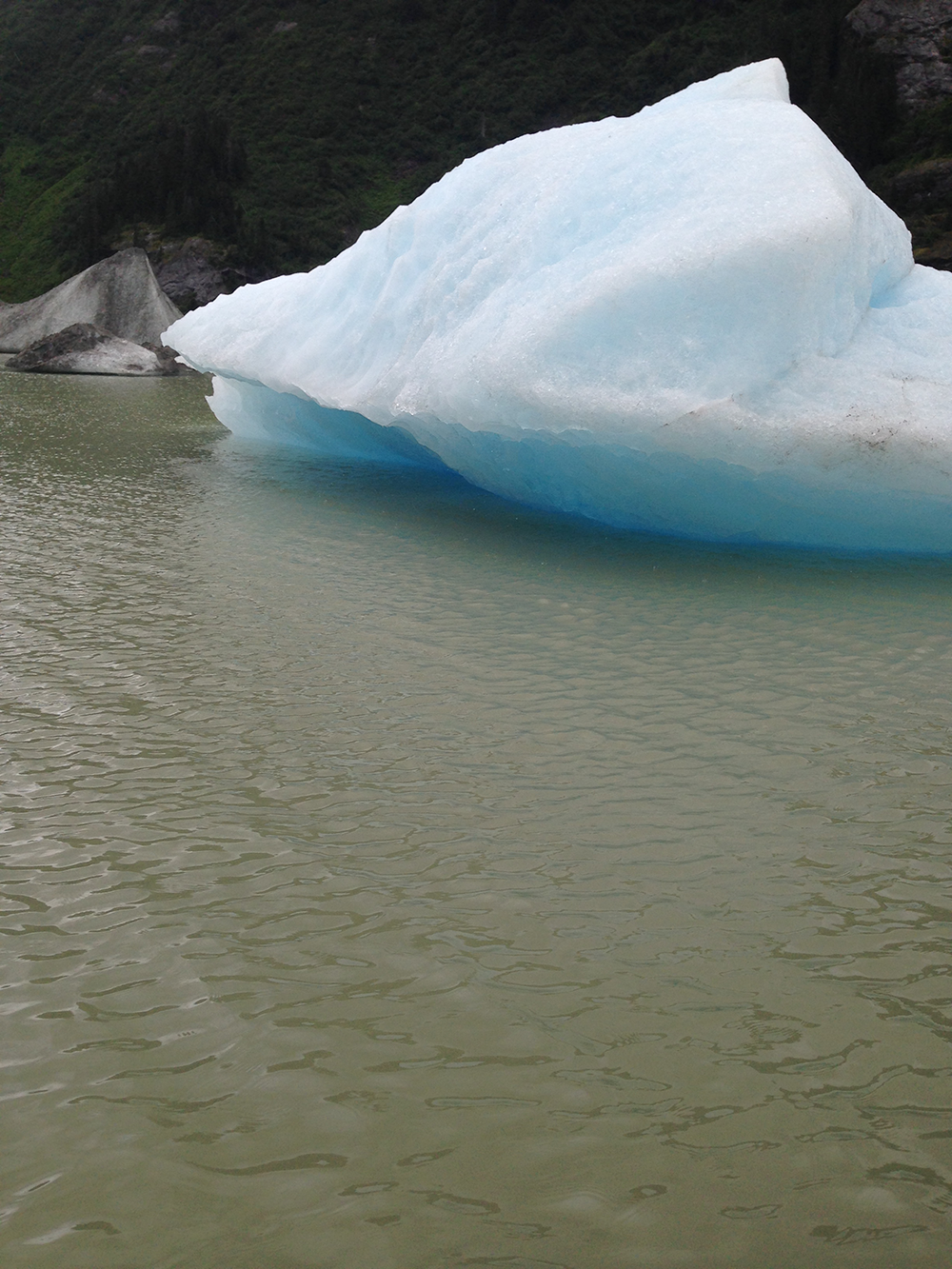
Shakes Lake, filled with icebergs that calved off of Shakes Glacier (Photo: Emmett FitzGerald)
HAASATH: If you lost the fishing industry you wouldn’t have anything. It would be a ghost town.
FITZGERALD: But for Einar, the need to protect the Stikine, one of the last wild rivers and the river he grew up on, goes well its economic value.
HAASATH: The river is greatly important. And I would hate to see anything happen to it. People talk about industry and that sort of thing. Well, industry comes and goes, but a river, by golly, once you destroy it its gone. You can’t bring it back.
FITZGERALD: The river and its riches made Wrangell possible, and for this little town on the edge of a continent to survive and thrive, the mighty Stikine may still be the key.
For Living on Earth this is Emmett FitzGerald in Wrangell, Alaska.
CURWOOD: Special thanks to Trout Unlimited for help with Emmett’s series. You can find previous reports, more information and photos at our website, loe dot org.
* In a previous transcription, Brenda Schwartz-Yaeger was referenced as Brenda Washington.
Related links:
- Read more about the city of Wrangell, Alaska
- Video of the Tahltan blockade of the Red Chris mine
- Thanks to Trout Unlimited in southeast Alaska
CURWOOD: Living on Earth is produced by the World Media Foundation. Our crew includes Naomi Arenberg, Bobby Bascomb, Emmett Fitzgerald, Helen Palmer, Adelaide Chen, Jenni Doering, Lauren Hinkel, James Curwood, and Jennifer Marquis, and we welcome John Duff to our team this week. Our show was engineered by Tom Tiger, with help from Jake Rego, Jeff Wade and Noel Flatt. Alison Lirish Dean composed our themes. You can find us anytime at L-O-E dot org - and like us, please, on our Facebook page - it’s PRI’s Living on Earth. And we tweet from @LivingOnEarth. I'm Steve Curwood. Thanks for listening.
ANNOUNCER1: Funding for Living On Earth comes from the Grantham Foundation for the protection of the environment, supporting strategic communication and collaboration in solving the world’s most pressing environmental problems. The Kendeda Fund, furthering the values that contribute to a healthy planet, and Gilman Ordway for coverage of conservation and environmental change. Living on Earth is also supported by Stonyfield Farm, makers of organic yogurt, smoothies and more; www.stonyfield.com.
ANNOUNCER2: PRI. Public Radio International.
Living on Earth wants to hear from you!
Living on Earth
62 Calef Highway, Suite 212
Lee, NH 03861
Telephone: 617-287-4121
E-mail: comments@loe.org
Newsletter [Click here]
Donate to Living on Earth!
Living on Earth is an independent media program and relies entirely on contributions from listeners and institutions supporting public service. Please donate now to preserve an independent environmental voice.
NewsletterLiving on Earth offers a weekly delivery of the show's rundown to your mailbox. Sign up for our newsletter today!
 Sailors For The Sea: Be the change you want to sea.
Sailors For The Sea: Be the change you want to sea.
 The Grantham Foundation for the Protection of the Environment: Committed to protecting and improving the health of the global environment.
The Grantham Foundation for the Protection of the Environment: Committed to protecting and improving the health of the global environment.
 Contribute to Living on Earth and receive, as our gift to you, an archival print of one of Mark Seth Lender's extraordinary wildlife photographs. Follow the link to see Mark's current collection of photographs.
Contribute to Living on Earth and receive, as our gift to you, an archival print of one of Mark Seth Lender's extraordinary wildlife photographs. Follow the link to see Mark's current collection of photographs.
 Buy a signed copy of Mark Seth Lender's book Smeagull the Seagull & support Living on Earth
Buy a signed copy of Mark Seth Lender's book Smeagull the Seagull & support Living on Earth

